270 papers:
 DATE-2015-DaneseGP #automation #behaviour #execution #modelling
DATE-2015-DaneseGP #automation #behaviour #execution #modelling- Automatic extraction of assertions from execution traces of behavioural models (AD, TG, GP), pp. 67–72.
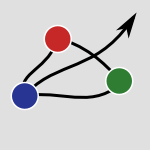 HT-2015-ApaolazaHJ #analysis #behaviour #interactive #low level #web
HT-2015-ApaolazaHJ #analysis #behaviour #interactive #low level #web- Longitudinal Analysis of Low-Level Web Interaction through Micro Behaviours (AA, SH, CJ), pp. 337–340.
 HT-2015-BurelMHA #behaviour #community #online #predict
HT-2015-BurelMHA #behaviour #community #online #predict- Predicting Answering Behaviour in Online Question Answering Communities (GB, PM, YH, HA), pp. 201–210.
 SEFM-2015-BlomHZ #behaviour #concurrent #functional #source code #verification
SEFM-2015-BlomHZ #behaviour #concurrent #functional #source code #verification- History-Based Verification of Functional Behaviour of Concurrent Programs (SB, MH, MZS), pp. 84–98.
 CHI-2015-DamianTBSLA #behaviour #feedback #interactive #realtime #social #using
CHI-2015-DamianTBSLA #behaviour #feedback #interactive #realtime #social #using- Augmenting Social Interactions: Realtime Behavioural Feedback using Social Signal Processing Techniques (ID, CSST, TB, JS, KL, EA), pp. 565–574.
 DUXU-DD-2015-OliveiraMMM #analysis #behaviour #design
DUXU-DD-2015-OliveiraMMM #analysis #behaviour #design- Scenario Analysis as a Tool for Informing the Design of Behaviour Change Interventions (LCRdO, MCM, VM, AJM), pp. 535–547.
 DUXU-UI-2015-MarczalJ #analysis #behaviour #mobile
DUXU-UI-2015-MarczalJ #analysis #behaviour #mobile- Behavioural Variables Analysis in Mobile Environments (DM, PTAJ), pp. 118–130.
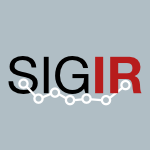 SIGIR-2015-Barreda-Angeles #behaviour #latency
SIGIR-2015-Barreda-Angeles #behaviour #latency- Unconscious Physiological Effects of Search Latency on Users and Their Click Behaviour (MBÁ, IA, XB, BBC, APB), pp. 203–212.
 SAC-2015-DuarteBGCT #behaviour #generative #towards
SAC-2015-DuarteBGCT #behaviour #generative #towards- Towards context-aware behaviour generation (PAdSD, FMB, FAdAG, WVdC, FAMT), pp. 596–598.
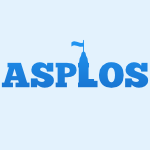 ASPLOS-2015-AlglaveBDGKPSW #behaviour #concurrent #gpu #programming
ASPLOS-2015-AlglaveBDGKPSW #behaviour #concurrent #gpu #programming- GPU Concurrency: Weak Behaviours and Programming Assumptions (JA, MB, AFD, GG, JK, DP, TS, JW), pp. 577–591.
 CSL-2015-SalvatiW #behaviour #higher-order #source code
CSL-2015-SalvatiW #behaviour #higher-order #source code- A Model for Behavioural Properties of Higher-order Programs (SS, IW), pp. 229–243.
 ICST-2015-AliY #behaviour #cyber-physical #evolution #modelling #named #nondeterminism #testing
ICST-2015-AliY #behaviour #cyber-physical #evolution #modelling #named #nondeterminism #testing- U-Test: Evolving, Modelling and Testing Realistic Uncertain Behaviours of Cyber-Physical Systems (SA, TY), pp. 1–2.
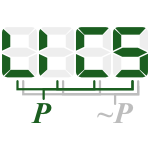 LICS-2015-BrazdilKKN #behaviour #probability
LICS-2015-BrazdilKKN #behaviour #probability- Long-Run Average Behaviour of Probabilistic Vector Addition Systems (TB, SK, AK, PN), pp. 44–55.
 FASE-2014-OuederniSCP #behaviour #named
FASE-2014-OuederniSCP #behaviour #named- Comparator: A Tool for Quantifying Behavioural Compatibility (MO, GS, JC, EP), pp. 306–309.
 SEFM-2014-LaibinisTGMK #behaviour #formal method #modelling #verification
SEFM-2014-LaibinisTGMK #behaviour #formal method #modelling #verification- Formal Modelling and Verification of Cooperative Ant Behaviour in Event-B (LL, ET, ZG, FM, AHK), pp. 363–377.
 SEFM-2014-PunSS #behaviour #concurrent
SEFM-2014-PunSS #behaviour #concurrent- Effect-Polymorphic Behaviour Inference for Deadlock Checking (KIP, MS, VS), pp. 50–64.
 CSCW-2014-QuattroneMC #behaviour
CSCW-2014-QuattroneMC #behaviour- Mind the map: the impact of culture and economic affluence on crowd-mapping behaviours (GQ, AJM, LC), pp. 934–944.
 HCI-AIMT-2014-NavarrettaL #behaviour #interactive #multimodal
HCI-AIMT-2014-NavarrettaL #behaviour #interactive #multimodal- Multimodal Behaviours in Comparable Danish and Polish Human-Human Triadic Spontaneous Interactions (CN, ML), pp. 462–471.
 HCI-AIMT-2014-WuttkeM #adaptation #behaviour #communication
HCI-AIMT-2014-WuttkeM #adaptation #behaviour #communication- Natural Forms of Communication and Adaptive Behaviour in Human-Computer-Interaction (MW, KUM), pp. 641–647.
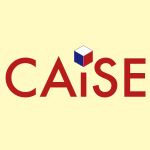 CAiSE-2014-PikaWFHLA #behaviour #framework #using
CAiSE-2014-PikaWFHLA #behaviour #framework #using- An Extensible Framework for Analysing Resource Behaviour Using Event Logs (AP, MTW, CJF, AHMtH, ML, WMPvdA), pp. 564–579.
 ICEIS-v1-2014-Rios-AguilarLP #behaviour #information management #mobile #monitoring #using
ICEIS-v1-2014-Rios-AguilarLP #behaviour #information management #mobile #monitoring #using- Business Information System for the Control of Workforce Through Behaviour Monitoring Using Reactive and Terminal-based Mobile Location Technologies (SRA, FJLM, APS), pp. 30–38.
 ICPR-2014-AryafarLA #behaviour
ICPR-2014-AryafarLA #behaviour- Exploring User Behaviour on Etsy through Dominant Colors (KA, CL, JA), pp. 1437–1442.
 ICPR-2014-BicegoRFRG #behaviour #using
ICPR-2014-BicegoRFRG #behaviour #using- Behavioural Biometrics Using Electricity Load Profiles (MB, FR, AF, SDR, EG), pp. 1764–1769.
 ICPR-2014-NathLHWBS #automation #behaviour #recognition #social
ICPR-2014-NathLHWBS #automation #behaviour #recognition #social- Automated Social Behaviour Recognition at Low Resolution (TN, GL, BH, BW, SDB, PS), pp. 2323–2328.
 SEKE-2014-FariasONCM #behaviour #case study
SEKE-2014-FariasONCM #behaviour #case study- Recovering Valuable Information Behaviour from OSS Contributors: An Exploratory Study (MAdFF, PO, RLN, MCJ, MGM), pp. 474–477.
 SIGIR-2014-Kharitonov #behaviour #evaluation #modelling #online #web
SIGIR-2014-Kharitonov #behaviour #evaluation #modelling #online #web- Improving offline and online web search evaluation by modelling the user behaviour (EK), p. 1278.
 SKY-2014-Fernandez-Utrilla #behaviour #predict #web
SKY-2014-Fernandez-Utrilla #behaviour #predict #web- An Unified Behaviour Model to Predict Web 2.0 Adoption as a Tool for Software-Knowledge Sharing (MFU, PFU, GM), pp. 3–18.
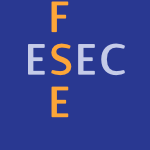 FSE-2014-CordyHLSDL #abstraction #behaviour #modelling #product line #refinement
FSE-2014-CordyHLSDL #abstraction #behaviour #modelling #product line #refinement- Counterexample guided abstraction refinement of product-line behavioural models (MC, PH, AL, PYS, BD, ML), pp. 190–201.
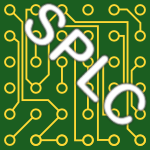 SPLC-2014-ShakerA #behaviour #interactive #product line
SPLC-2014-ShakerA #behaviour #interactive #product line- Behaviour interactions among product-line features (PS, JMA), pp. 242–246.
 LICS-CSL-2014-AsarinBDDM #behaviour #logic
LICS-CSL-2014-AsarinBDDM #behaviour #logic- Asymptotic behaviour in temporal logic (EA, MB, AD, CD, CM), p. 9.
 TAP-2014-DiepenbeckKSD #behaviour #development #testing #verification
TAP-2014-DiepenbeckKSD #behaviour #development #testing #verification- Behaviour Driven Development for Tests and Verification (MD, UK, MS, RD), pp. 61–77.
 CASE-2013-RoyerBTT #assessment #behaviour #energy #modelling #multi #simulation #using
CASE-2013-RoyerBTT #assessment #behaviour #energy #modelling #multi #simulation #using- Modelling of a multi-zone building and assessment of its thermal behaviour using an energy simulation software (SR, MB, ST, TT), pp. 735–740.
 MSR-2013-GrantB #behaviour #empirical
MSR-2013-GrantB #behaviour #empirical- Encouraging user behaviour with achievements: an empirical study (SG, BB), pp. 65–68.
 WCRE-2013-AntonyAC #approach #behaviour #clone detection #detection #modelling
WCRE-2013-AntonyAC #approach #behaviour #clone detection #detection #modelling- An approach to clone detection in behavioural models (EPA, MHA, JRC), pp. 472–476.
 IFM-2013-RuksenasCH #behaviour #evaluation #interactive #predict
IFM-2013-RuksenasCH #behaviour #evaluation #interactive #predict- Integrating Formal Predictions of Interactive System Behaviour with User Evaluation (RR, PC, MDH), pp. 238–252.
 IFM-2013-TaylorBD #automation #behaviour #erlang
IFM-2013-TaylorBD #automation #behaviour #erlang- Automatic Inference of Erlang Module Behaviour (RT, KB, JD), pp. 253–267.
 SEFM-2013-BennaceurCIJ #automation #behaviour #ontology #reasoning #synthesis
SEFM-2013-BennaceurCIJ #automation #behaviour #ontology #reasoning #synthesis- Automated Mediator Synthesis: Combining Behavioural and Ontological Reasoning (AB, CC, MI, BJ), pp. 274–288.
 SEFM-2013-SargolzaeiSAA #approximate #behaviour #web #web service
SEFM-2013-SargolzaeiSAA #approximate #behaviour #web #web service- A Tool for Behaviour-Based Discovery of Approximately Matching Web Services (MS, FS, FA, HA), pp. 152–166.
 SFM-2013-BortolussiH #approximate #behaviour #markov #modelling
SFM-2013-BortolussiH #approximate #behaviour #markov #modelling- Checking Individual Agent Behaviours in Markov Population Models by Fluid Approximation (LB, JH), pp. 113–149.
 CHI-2013-BullingWG #behaviour #named #recognition #visual notation
CHI-2013-BullingWG #behaviour #named #recognition #visual notation- EyeContext: recognition of high-level contextual cues from human visual behaviour (AB, CW, HG), pp. 305–308.
 DUXU-PMT-2013-KarahasanovicF #2d #approach #behaviour #experience #modelling #network
DUXU-PMT-2013-KarahasanovicF #2d #approach #behaviour #experience #modelling #network- Modelling User Behaviour and Experience — The R2D2 Networks Approach (AK, AF), pp. 506–515.
 CAiSE-2013-SuriadiWOHD #behaviour #case study #comprehension #process #scalability
CAiSE-2013-SuriadiWOHD #behaviour #case study #comprehension #process #scalability- Understanding Process Behaviours in a Large Insurance Company in Australia: A Case Study (SS, MTW, CO, AHMtH, NJvD), pp. 449–464.
 SIGIR-2013-MoshfeghiJ #behaviour #effectiveness #feedback #using
SIGIR-2013-MoshfeghiJ #behaviour #effectiveness #feedback #using- An effective implicit relevance feedback technique using affective, physiological and behavioural features (YM, JMJ), pp. 133–142.
 MoDELS-2013-PiresPWD #behaviour #embedded #source code #verification
MoDELS-2013-PiresPWD #behaviour #embedded #source code #verification- Behavioural Verification in Embedded Software, from Model to Source Code (AFP, TP, VW, SD), pp. 320–335.
 MoDELS-2013-PiresPWD #behaviour #embedded #source code #verification
MoDELS-2013-PiresPWD #behaviour #embedded #source code #verification- Behavioural Verification in Embedded Software, from Model to Source Code (AFP, TP, VW, SD), pp. 320–335.
 ICST-2013-CzemerinskiBU #abstraction #behaviour #black box
ICST-2013-CzemerinskiBU #abstraction #behaviour #black box- Behaviour Abstraction Coverage as Black-Box Adequacy Criteria (HC, VAB, SU), pp. 222–231.
 CASE-2012-WigstromL #behaviour #scheduling
CASE-2012-WigstromL #behaviour #scheduling- Scheduling model for systems with complex alternative behaviour (OW, BL), pp. 587–593.
 ITiCSE-2012-GomesSM #behaviour #case study #learning #student #towards
ITiCSE-2012-GomesSM #behaviour #case study #learning #student #towards- A study on students’ behaviours and attitudes towards learning to program (AJG, ÁNS, AJM), pp. 132–137.
 ESOP-2012-ChenCJK #behaviour #component #composition #specification
ESOP-2012-ChenCJK #behaviour #component #composition #specification- A Compositional Specification Theory for Component Behaviours (TC, CC, BJ, MZK), pp. 148–168.
 IFM-2012-TianBB #behaviour #detection #game studies #multi
IFM-2012-TianBB #behaviour #detection #game studies #multi- Behaviour-Based Cheat Detection in Multiplayer Games with Event-B (HT, PJB, AGB), pp. 206–220.
 CHI-2012-HenzeRB #behaviour #mobile #type system #using
CHI-2012-HenzeRB #behaviour #mobile #type system #using- Observational and experimental investigation of typing behaviour using virtual keyboards for mobile devices (NH, ER, SB), pp. 2659–2668.
 SPLC-2012-CordySHL #behaviour #modelling #product line #realtime #verification
SPLC-2012-CordySHL #behaviour #modelling #product line #realtime #verification- Behavioural modelling and verification of real-time software product lines (MC, PYS, PH, AL), pp. 66–75.
 ISMM-2012-SeweMSABRG #behaviour #comparison #java #memory management #scala #source code
ISMM-2012-SeweMSABRG #behaviour #comparison #java #memory management #scala #source code- new Scala() instance of Java: a comparison of the memory behaviour of Java and Scala programs (AS, MM, AS, DA, WB, NPR, SZG), pp. 97–108.
 ICST-2012-FraserW #behaviour #testing
ICST-2012-FraserW #behaviour #testing- Behaviourally Adequate Software Testing (GF, NW), pp. 300–309.
 ICTSS-2012-TaylorHBD #behaviour #testing #using
ICTSS-2012-TaylorHBD #behaviour #testing #using- Using Behaviour Inference to Optimise Regression Test Sets (RT, MH, KB, JD), pp. 184–199.
 CASE-2011-Incerti #behaviour
CASE-2011-Incerti #behaviour- Dynamic behaviour of elastic cam devices driven by servomotors with PID velocity control (GI), pp. 268–273.
 HT-2011-IturriozDA #behaviour
HT-2011-IturriozDA #behaviour- Reactive tags: associating behaviour to prescriptive tags (JI, OD, IA), pp. 191–200.
 ICPC-2011-SyerAH #behaviour #case study #comprehension #industrial
ICPC-2011-SyerAH #behaviour #case study #comprehension #industrial- Industrial Case Study on Supporting the Comprehension of System Behaviour under Load (MDS, BA, AEH), pp. 215–216.
 ICPC-2011-YingR #behaviour
ICPC-2011-YingR #behaviour- The Influence of the Task on Programmer Behaviour (ATTY, MPR), pp. 31–40.
 PLDI-2011-BudiLJL #behaviour #debugging #named
PLDI-2011-BudiLJL #behaviour #debugging #named- kb-anonymity: a model for anonymized behaviour-preserving test and debugging data (AB, DL, LJ, L), pp. 447–457.
 CHI-2011-CoyleMDO #behaviour #game studies
CHI-2011-CoyleMDO #behaviour #game studies- Exploratory evaluations of a computer game supporting cognitive behavioural therapy for adolescents (DC, NM, GD, GO), pp. 2937–2946.
 DHM-2011-TangoMAP #automation #behaviour #classification
DHM-2011-TangoMAP #automation #behaviour #classification- Automation Effects on Driver’s Behaviour When Integrating a PADAS and a Distraction Classifier (FT, LM, RA, OP), pp. 503–512.
 HCD-2011-AhramK #behaviour #design #modelling #network #social
HCD-2011-AhramK #behaviour #design #modelling #network #social- Social Networking Applications: Smarter Product Design for Complex Human Behaviour Modeling (TZA, WK), pp. 471–480.
 CIKM-2011-ONeilPA #behaviour #game studies #named #query
CIKM-2011-ONeilPA #behaviour #game studies #named #query- Fu-Finder: a game for studying querying behaviours (CO, JP, LA), pp. 2561–2564.
 ICSE-2011-CasoBGU #abstraction #behaviour #validation
ICSE-2011-CasoBGU #abstraction #behaviour #validation- Program abstractions for behaviour validation (GdC, VAB, DG, SU), pp. 381–390.
 ICSE-2011-DIppolitoBPU #behaviour #modelling #synthesis
ICSE-2011-DIppolitoBPU #behaviour #modelling #synthesis- Synthesis of live behaviour models for fallible domains (ND, VAB, NP, SU), pp. 211–220.
 ICSE-2011-HolmesN #behaviour #identification
ICSE-2011-HolmesN #behaviour #identification- Identifying program, test, and environmental changes that affect behaviour (RH, DN), pp. 371–380.
 ICSE-2011-HolmesN11a #behaviour #identification
ICSE-2011-HolmesN11a #behaviour #identification- Identifying opaque behavioural changes (RH, DN), pp. 995–997.
 ICSE-2011-PirzadehH #analysis #behaviour #framework
ICSE-2011-PirzadehH #analysis #behaviour #framework- A software behaviour analysis framework based on the human perception systems (HP, AHL), pp. 948–951.
 CBSE-2010-LauNTR #behaviour #composition #design pattern
CBSE-2010-LauNTR #behaviour #composition #design pattern- (Behavioural) Design Patterns as Composition Operators (KKL, IN, CMT, TR), pp. 232–251.
 ICGT-2010-HermannEOG #analysis #behaviour #formal method #functional #graph grammar #model transformation
ICGT-2010-HermannEOG #analysis #behaviour #formal method #functional #graph grammar #model transformation- Formal Analysis of Functional Behaviour for Model Transformations Based on Triple Graph Grammars (FH, HE, FO, UG), pp. 155–170.
 ICGT-2010-Khomenko #behaviour
ICGT-2010-Khomenko #behaviour- A New Type of Behaviour-Preserving Transition Insertions in Unfolding Prefixes (VK), pp. 75–90.
 CHI-2010-JensenST #behaviour #navigation
CHI-2010-JensenST #behaviour #navigation- Studying driver attention and behaviour for three configurations of GPS navigation in real traffic driving (BSJ, MBS, NT), pp. 1271–1280.
 CAiSE-2010-SerralVP #adaptation #behaviour #evolution #runtime
CAiSE-2010-SerralVP #adaptation #behaviour #evolution #runtime- Supporting Runtime System Evolution to Adapt to User Behaviour (ES, PV, VP), pp. 378–392.
 CAiSE-2010-WeidlichPDM #behaviour #metric #process
CAiSE-2010-WeidlichPDM #behaviour #metric #process- Process Compliance Measurement Based on Behavioural Profiles (MW, AP, ND, JM), pp. 499–514.
 KDIR-2010-Codina-FilbaN #analysis #behaviour #internet #query #web
KDIR-2010-Codina-FilbaN #analysis #behaviour #internet #query #web- Collective Behaviour in Internet — Tendency Analysis of the Frequency of User Web Queries (JCF, DFN), pp. 168–175.
 KDIR-2010-Onem #behaviour #classification #detection #network
KDIR-2010-Onem #behaviour #classification #detection #network- Unwanted Behaviour Detection and Classification in Network Traffic (IMÖ), pp. 122–128.
 SIGIR-2010-ClementsSVR #behaviour #predict #using
SIGIR-2010-ClementsSVR #behaviour #predict #using- Using flickr geotags to predict user travel behaviour (MC, PS, APdV, MJTR), pp. 851–852.
 ECMFA-2010-SterrittCC #behaviour #design pattern #precise #specification
ECMFA-2010-SterrittCC #behaviour #design pattern #precise #specification- Precise Specification of Design Pattern Structure and Behaviour (AS, SC, VC), pp. 277–292.
 PPDP-2010-Barbanerad #behaviour
PPDP-2010-Barbanerad #behaviour- Two notions of sub-behaviour for session-based client/server systems (FB, Ud), pp. 155–164.
 SAC-2010-MassinkHL #analysis #behaviour #scalability
SAC-2010-MassinkHL #analysis #behaviour #scalability- Scalable analysis of collective behaviour in smart service systems (MM, MDH, DL), pp. 1173–1180.
 FSE-2010-DIppolitoBPU #behaviour #modelling #synthesis
FSE-2010-DIppolitoBPU #behaviour #modelling #synthesis- Synthesis of live behaviour models (ND, VAB, NP, SU), pp. 77–86.
 ICSE-2010-Caso #behaviour #re-engineering #validation
ICSE-2010-Caso #behaviour #re-engineering #validation- Behavioural validation of software engineering artefacts (GdC), pp. 335–336.
 ICSE-2010-Caso10a #behaviour #re-engineering #validation
ICSE-2010-Caso10a #behaviour #re-engineering #validation- Behavioural validation of software engineering artefacts (GdC), pp. 505–506.
 ICSE-2010-SteimannT #behaviour #constraints #generative
ICSE-2010-SteimannT #behaviour #constraints #generative- From behaviour preservation to behaviour modification: constraint-based mutant generation (FS, AT), pp. 425–434.
 QoSA-2009-ChanP #architecture #behaviour #composition #predict #process
QoSA-2009-ChanP #architecture #behaviour #composition #predict #process- Compositional Prediction of Timed Behaviour for Process Control Architecture (KC, IP), pp. 86–100.
 DocEng-2009-BattleB #behaviour #concurrent #documentation #modelling #state machine
DocEng-2009-BattleB #behaviour #concurrent #documentation #modelling #state machine- Modelling composite document behaviour with concurrent hierarchical state machines (SB, HB), pp. 25–28.
 FASE-2009-AguirreFMMW #alloy #behaviour #specification #using
FASE-2009-AguirreFMMW #alloy #behaviour #specification #using- Describing and Analyzing Behaviours over Tabular Specifications Using (Dyn)Alloy (NA, MFF, MMM, TSEM, AW), pp. 155–170.
 ICPC-2009-MurphyVS #behaviour #process #programming #using
ICPC-2009-MurphyVS #behaviour #process #programming #using- Using activity traces to characterize programming behaviour beyond the lab (GCM, PV, DCS), pp. 90–94.
 ICSM-2009-AmalfitanoFT #behaviour #internet #modelling #reverse engineering
ICSM-2009-AmalfitanoFT #behaviour #internet #modelling #reverse engineering- Experimenting a reverse engineering technique for modelling the behaviour of rich internet applications (DA, ARF, PT), pp. 571–574.
 ICALP-v2-2009-AcciaiB #behaviour #infinity #safety #π-calculus
ICALP-v2-2009-AcciaiB #behaviour #infinity #safety #π-calculus- Deciding Safety Properties in Infinite-State π-Calculus via Behavioural Types (LA, MB), pp. 31–42.
 CEFP-2009-CesariniT #behaviour #design pattern #erlang #process #programming
CEFP-2009-CesariniT #behaviour #design pattern #erlang #process #programming- Erlang Behaviours: Programming with Process Design Patterns (FC, SJT), pp. 19–41.
 CEFP-2009-TothBHLTK #behaviour #dependence #erlang #graph #impact analysis #source code #using
CEFP-2009-TothBHLTK #behaviour #dependence #erlang #graph #impact analysis #source code #using- Impact Analysis of Erlang Programs Using Behaviour Dependency Graphs (MT, IB, ZH, LL, MT, TK), pp. 372–390.
 SIGIR-2009-TomsF #analysis #behaviour #predict
SIGIR-2009-TomsF #analysis #behaviour #predict- Predicting stopping behaviour: a preliminary analysis (EGT, LF), pp. 750–751.
 ECMDA-FA-2009-DanielePS #approach #behaviour #mobile #modelling
ECMDA-FA-2009-DanielePS #approach #behaviour #mobile #modelling- An MDA-Based Approach for Behaviour Modelling of Context-Aware Mobile Applications (LD, LFP, MvS), pp. 206–220.
 ESEC-FSE-2009-PaveseBU #analysis #behaviour #modelling #probability
ESEC-FSE-2009-PaveseBU #analysis #behaviour #modelling #probability- Probabilistic environments in the quantitative analysis of (non-probabilistic) behaviour models (EP, VAB, SU), pp. 335–344.
 VMCAI-2009-GurovH #behaviour #source code
VMCAI-2009-GurovH #behaviour #source code- Reducing Behavioural to Structural Properties of Programs with Procedures (DG, MH), pp. 136–150.
 CBSE-2008-KuperbergKR #behaviour #black box #component #modelling #parametricity #performance #predict #using
CBSE-2008-KuperbergKR #behaviour #black box #component #modelling #parametricity #performance #predict #using- Performance Prediction for Black-Box Components Using Reengineered Parametric Behaviour Models (MK, KK, RHR), pp. 48–63.
 CASE-2008-HeribanTGF #behaviour
CASE-2008-HeribanTGF #behaviour- Improving rotation behaviour of robotic structures for micro-assembly (DH, AT, MG, GF), pp. 983–988.
 DATE-2008-AliWWB #approach #behaviour #modelling #performance
DATE-2008-AliWWB #approach #behaviour #modelling #performance- A New Approach for Combining Yield and Performance in Behavioural Models for Analogue Integrated Circuits (SA, RW, PRW, ADB), pp. 152–157.
 FASE-2008-MellitiPM #adaptation #automation #behaviour #composition #distributed #semantics
FASE-2008-MellitiPM #adaptation #automation #behaviour #composition #distributed #semantics- Distributed Behavioural Adaptation for the Automatic Composition of Semantic Services (TM, PP, SBM), pp. 146–162.
 SAS-2008-NanzNN #abstraction #behaviour #concurrent
SAS-2008-NanzNN #abstraction #behaviour #concurrent- Modal Abstractions of Concurrent Behaviour (SN, FN, HRN), pp. 159–173.
 SEFM-2008-RuksenasCB #behaviour #game studies #modelling
SEFM-2008-RuksenasCB #behaviour #game studies #modelling- Modelling Rational User Behaviour as Games between an Angel and a Demon (RR, PC, AB), pp. 355–364.
 SEFM-2008-SampathRRS #behaviour #code generation #testing
SEFM-2008-SampathRRS #behaviour #code generation #testing- Behaviour Directed Testing of Auto-code Generators (PS, ACR, SR, KCS), pp. 191–200.
 CHI-2008-LindleyCB #behaviour #experience #game studies #social
CHI-2008-LindleyCB #behaviour #experience #game studies #social- Stirring up experience through movement in game play: effects on engagement and social behaviour (SEL, JLC, NB), pp. 511–514.
 CIKM-2008-LoekitoB #behaviour #mining
CIKM-2008-LoekitoB #behaviour #mining- Mining influential attributes that capture class and group contrast behaviour (EL, JB), pp. 971–980.
 ICPR-2008-DarbyLC #behaviour
ICPR-2008-DarbyLC #behaviour- Behaviour based particle filtering for human articulated motion tracking (JD, BL, NPC), pp. 1–4.
 ICPR-2008-LablackD #analysis #behaviour
ICPR-2008-LablackD #analysis #behaviour- Analysis of human behaviour in front of a target scene (AL, CD), pp. 1–4.
 ECMDA-FA-2008-EngelsKRSSW #behaviour #model transformation #process #towards #uml
ECMDA-FA-2008-EngelsKRSSW #behaviour #model transformation #process #towards #uml- From UML Activities to TAAL — Towards Behaviour-Preserving Model Transformations (GE, AK, AR, MS, CS, HW), pp. 94–109.
 MoDELS-2008-LuongLC #behaviour #consistency #development #implementation #incremental #modelling
MoDELS-2008-LuongLC #behaviour #consistency #development #implementation #incremental #modelling- Implementation of the Conformance Relation for Incremental Development of Behavioural Models (HVL, TL, ALC), pp. 356–370.
 MoDELS-2008-LuongLC #behaviour #consistency #development #implementation #incremental #modelling
MoDELS-2008-LuongLC #behaviour #consistency #development #implementation #incremental #modelling- Implementation of the Conformance Relation for Incremental Development of Behavioural Models (HVL, TL, ALC), pp. 356–370.
 QAPL-2008-ZhangZ #behaviour #pseudo
QAPL-2008-ZhangZ #behaviour #pseudo- A Behavioural Pseudometric based on λ-Bisimilarity (JZ, ZZ), pp. 115–127.
 SAC-2008-DirgahayuQS #behaviour #design #enterprise #integration #interactive
SAC-2008-DirgahayuQS #behaviour #design #enterprise #integration #interactive- Designing interaction behaviour in service-oriented enterprise application integration (TD, DACQ, MvS), pp. 1048–1054.
 FSE-2008-FischbeinU #behaviour #modelling #on the
FSE-2008-FischbeinU #behaviour #modelling #on the- On correct and complete strong merging of partial behaviour models (DF, SU), pp. 297–307.
 HT-2007-BrownBFE #behaviour
HT-2007-BrownBFE #behaviour- Revealing the hidden rationality of user browsing behaviour (EJB, TJB, TF, CvdE), pp. 85–94.
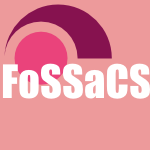 FoSSaCS-2007-BreugelSW #approximate #behaviour #probability #pseudo
FoSSaCS-2007-BreugelSW #approximate #behaviour #probability #pseudo- Approximating a Behavioural Pseudometric Without Discount for Probabilistic Systems (FvB, BS, JW), pp. 123–137.
 IFM-2007-CavarraW #behaviour #modelling #specification
IFM-2007-CavarraW #behaviour #modelling #specification- Behavioural Specifications from Class Models (AC, JW), pp. 118–137.
 SEFM-2007-CamaraSC #adaptation #behaviour #composition #runtime #transaction
SEFM-2007-CamaraSC #adaptation #behaviour #composition #runtime #transaction- Run-time Composition and Adaptation of Mismatching Behavioural Transactions (JC, GS, CC), pp. 381–390.
 SEFM-2007-Hameurlain #behaviour #component #flexibility #protocol #specification
SEFM-2007-Hameurlain #behaviour #component #flexibility #protocol #specification- Flexible Behavioural Compatibility and Substitutability for Component Protocols: A Formal Specification (NH), pp. 391–400.
 HCI-IPT-2007-ZaharakisK #behaviour #interactive #social #ubiquitous
HCI-IPT-2007-ZaharakisK #behaviour #interactive #social #ubiquitous- Social Intelligence as the Means for Achieving Emergent Interactive Behaviour in Ubiquitous Computing Environments (IDZ, ADK), pp. 1018–1029.
 HIMI-IIE-2007-ZhangC #analysis #behaviour #collaboration
HIMI-IIE-2007-ZhangC #analysis #behaviour #collaboration- A Communicative Behaviour Analysis of Art-Technology Collaboration (YZ, LC), pp. 212–221.
 EDOC-2007-LiningtonL #approach #behaviour #modelling #security #using
EDOC-2007-LiningtonL #approach #behaviour #modelling #security #using- Incorporating Security Behaviour into Business Models Using a Model Driven Approach (PFL, PL), pp. 405–413.
 ICEIS-EIS-2007-MoralesTA #behaviour #consistency #modelling #semantics #uml
ICEIS-EIS-2007-MoralesTA #behaviour #consistency #modelling #semantics #uml- Checking Behavioural Consistency of UML-RT Models through Trace-Based Semantics (LEMM, MICT, KBA), pp. 205–211.
 ICEIS-SAIC-2007-BelbezeS #behaviour #web #web service
ICEIS-SAIC-2007-BelbezeS #behaviour #web #web service- Which Contribution of the Web Services in the Improvement of Web Searching? A Behavioural Study of the Net Surfers (CB, CSD), pp. 129–137.
 SIGIR-2007-Huggett #behaviour #modelling
SIGIR-2007-Huggett #behaviour #modelling- Information-behaviour modeling with external cues (MH), p. 920.
 QAPL-2007-Argent-KatwalaB #behaviour #network
QAPL-2007-Argent-KatwalaB #behaviour #network- PEPA Queues: Capturing Customer Behaviour in Queueing Networks (AAK, JTB), pp. 3–25.
 REFSQ-2007-SorbyN #behaviour #framework #towards
REFSQ-2007-SorbyN #behaviour #framework #towards- Towards a Tomographic Framework for Structured Observation of Communicative Behaviour in Hospital Wards (IDS, ØN), pp. 262–276.
 ESEC-FSE-2007-FantechiG #behaviour #product line
ESEC-FSE-2007-FantechiG #behaviour #product line- A behavioural model for product families (AF, SG), pp. 521–524.
 ICSE-2007-UchitelBC #behaviour #synthesis
ICSE-2007-UchitelBC #behaviour #synthesis- Behaviour Model Synthesis from Properties and Scenarios (SU, GB, MC), pp. 34–43.
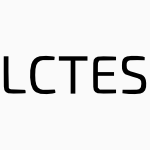 LCTES-2007-WaltherHN #behaviour #embedded #realtime
LCTES-2007-WaltherHN #behaviour #embedded #realtime- Analyzing the real-time behaviour of deeply embedded event driven systems (KW, RH, JN), pp. 149–151.
 QoSA-2006-DuzbayevP #behaviour #predict #runtime
QoSA-2006-DuzbayevP #behaviour #predict #runtime- Runtime Prediction of Queued Behaviour (ND, IP), pp. 78–94.
 ICPC-2006-Hamou-LhadjL #behaviour #comprehension #scalability
ICPC-2006-Hamou-LhadjL #behaviour #comprehension #scalability- Summarizing the Content of Large Traces to Facilitate the Understanding of the Behaviour of a Software System (AHL, TCL), pp. 181–190.
 FM-2006-BrunetCU #behaviour #model merging
FM-2006-BrunetCU #behaviour #model merging- Properties of Behavioural Model Merging (GB, MC, SU), pp. 98–114.
 AdaEurope-2006-ValpereiroP #behaviour
AdaEurope-2006-ValpereiroP #behaviour- POSIX Trace Based Behavioural Reflection (FV, LMP), pp. 27–39.
 ECIR-2006-WenRB #behaviour #online #topic
ECIR-2006-WenRB #behaviour #online #topic- The Effects on Topic Familiarity on Online Search Behaviour and Use of Relevance Criteria (LW, IR, PB), pp. 456–459.
 ICPR-v1-2006-CarterYF #approach #behaviour #markov #recognition
ICPR-v1-2006-CarterYF #approach #behaviour #markov #recognition- A Combined Bayesian Markovian Approach for Behaviour Recognition (NLC, DPY, JMF), pp. 761–764.
 ICPR-v3-2006-Law-ToGBB #behaviour #detection #video
ICPR-v3-2006-Law-ToGBB #behaviour #detection #video- Local Behaviours Labelling for Content Based Video Copy Detection (JLT, VGB, OB, NB), pp. 232–235.
 SIGIR-2006-FreundT #behaviour #enterprise
SIGIR-2006-FreundT #behaviour #enterprise- Enterprise search behaviour of software engineers (LF, EGT), pp. 645–646.
 QAPL-2006-SotinCJ #behaviour #java #static analysis
QAPL-2006-SotinCJ #behaviour #java #static analysis- Quantitative Static Analysis Over Semirings: Analysing Cache Behaviour for Java Card (PS, DC, TPJ), pp. 153–167.
 DATE-2005-Ruiz-SautuaMMH #behaviour #performance #synthesis
DATE-2005-Ruiz-SautuaMMH #behaviour #performance #synthesis- Behavioural Transformation to Improve Circuit Performance in High-Level Synthesis (RRS, MCM, JMM, RH), pp. 1252–1257.
 ITiCSE-2005-Jimenez-DiazGGG #behaviour #comprehension #visualisation
ITiCSE-2005-Jimenez-DiazGGG #behaviour #comprehension #visualisation- Software behaviour understanding Supported by dynamic visualization and role-play (GJD, MGA, MAGM, PAGC), pp. 54–58.
 IWPC-2005-OBrienB #approach #behaviour #empirical #modelling
IWPC-2005-OBrienB #approach #behaviour #empirical #modelling- Modelling the Information-Seeking Behaviour of Programmers — An Empirical Approach (MPO, JB), pp. 125–134.
 IWPC-2005-WalkinshawRW #behaviour #comprehension #object-oriented #perspective #source code
IWPC-2005-WalkinshawRW #behaviour #comprehension #object-oriented #perspective #source code- Understanding Object-Oriented Source Code from the Behavioural Perspective (NW, MR, MW), pp. 215–224.
 CIAA-2005-BaillyCS #behaviour #communication #component #composition #contract
CIAA-2005-BaillyCS #behaviour #communication #component #composition #contract- Component Composition Preserving Behavioural Contracts Based on Communication Traces (AB, MC, ISR), pp. 54–65.
 ICALP-2005-BreugelHMW #approach #behaviour #pseudo
ICALP-2005-BreugelHMW #approach #behaviour #pseudo- An Accessible Approach to Behavioural Pseudometrics (FvB, CH, MM, JW), pp. 1018–1030.
 SEFM-2005-Hameurlain #behaviour #component #on the #protocol
SEFM-2005-Hameurlain #behaviour #component #on the #protocol- On Compatibility and Behavioural Substitutability of Component Protocols (NH), pp. 394–403.
 CEFP-2005-Hammond #approach #behaviour #bound #functional #programming
CEFP-2005-Hammond #approach #behaviour #bound #functional #programming- Exploiting Purely Functional Programming to Obtain Bounded Resource Behaviour: The Hume Approach (KH), pp. 100–134.
 SEKE-2005-WangM #behaviour #web
SEKE-2005-WangM #behaviour #web- Recovering Individual Accessing Behaviour from Web Logs (LW, CM), pp. 590–595.
 SEKE-2005-Zhu #behaviour #multi #reasoning
SEKE-2005-Zhu #behaviour #multi #reasoning- Formal Reasoning about Emergent Behaviours of Multi-Agent Systems (HZ), pp. 280–285.
 SAC-2005-TruongS #behaviour #modelling #uml #using #verification
SAC-2005-TruongS #behaviour #modelling #uml #using #verification- Verification of behavioural elements of UML models using B (NTT, JS), pp. 1546–1552.
 SAT-2005-SeitzAO #behaviour #random #satisfiability
SAT-2005-SeitzAO #behaviour #random #satisfiability- Threshold Behaviour of WalkSAT and Focused Metropolis Search on Random 3-Satisfiability (SS, MA, PO), pp. 475–481.
 DATE-v1-2004-MolinaRMH #behaviour #scheduling
DATE-v1-2004-MolinaRMH #behaviour #scheduling- Behavioural Bitwise Scheduling Based on Computational Effort Balancing (MCM, RRS, JMM, RH), pp. 684–685.
 DATE-v1-2004-WilsonRBKB #behaviour #modelling #performance
DATE-v1-2004-WilsonRBKB #behaviour #modelling #performance- Efficient Mixed-Domain Behavioural Modeling of Ferromagnetic Hysteresis Implemented in VHDL-AMS (PRW, JNR, ADB, TJK, JB), pp. 742–743.
 IFM-2004-Winter #behaviour #csp #formal method
IFM-2004-Winter #behaviour #csp #formal method- Formalising Behaviour Trees with CSP (KW), pp. 148–167.
 ICEIS-v3-2004-CavareroE #behaviour #how #information management #metric
ICEIS-v3-2004-CavareroE #behaviour #how #information management #metric- Metrics for Dynamics: How to Improve the Behaviour of an Object Information System (JLC, MJEC), pp. 344–349.
 ICEIS-v3-2004-McNeileS #behaviour #mixin #modelling #state machine
ICEIS-v3-2004-McNeileS #behaviour #mixin #modelling #state machine- Mixin Based Behaviour Modelling — An Example Based on Composed State Machines (ATM, NS), pp. 179–183.
 ICEIS-v4-2004-LokeL #behaviour #workflow
ICEIS-v4-2004-LokeL #behaviour #workflow- Analyzing Observable Behaviours of Device Ecology Workflows (SWL, SL), pp. 78–83.
 ICML-2004-MoralesS #behaviour #learning
ICML-2004-MoralesS #behaviour #learning- Learning to fly by combining reinforcement learning with behavioural cloning (EFM, CS).
 ICPR-v4-2004-OyekoyaS #behaviour #using #visual notation
ICPR-v4-2004-OyekoyaS #behaviour #using #visual notation- Exploring Human Eye Behaviour using a Model of Visual Attention (OO, FS), pp. 945–948.
 UML-2004-StraetenJM #behaviour #consistency #inheritance #refactoring
UML-2004-StraetenJM #behaviour #consistency #inheritance #refactoring- Supporting Model Refactorings Through Behaviour Inheritance Consistencies (RVDS, VJ, TM), pp. 305–319.
 OOPSLA-2004-DufourGHMSV #aspectj #behaviour #source code
OOPSLA-2004-DufourGHMSV #aspectj #behaviour #source code- Measuring the dynamic behaviour of AspectJ programs (BD, CG, LJH, OdM, GS, CV), pp. 150–169.
 RE-2004-HallZ #behaviour #named
RE-2004-HallZ #behaviour #named- OMML: A Behavioural Model Interchange Format (RJH, AZ), pp. 272–282.
 FSE-2004-UchitelC #behaviour #modelling
FSE-2004-UchitelC #behaviour #modelling- Merging partial behavioural models (SU, MC), pp. 43–52.
 DATE-2003-Castro-LopezFMR #behaviour #hardware #modelling #simulation #using
DATE-2003-Castro-LopezFMR #behaviour #hardware #modelling #simulation #using- Behavioural Modelling and Simulation of SigmaDelta Modulators Using Hardware Description Languages (RCL, FVF, FM, ÁRV), pp. 10168–10175.
 DATE-2003-MounirMF #automation #behaviour #performance #verification
DATE-2003-MounirMF #automation #behaviour #performance #verification- Automatic Behavioural Model Calibration for Efficient PLL System Verification (AM, AM, MF), pp. 20280–20285.
 FoSSaCS-2003-HennessyMR #behaviour #distributed #towards
FoSSaCS-2003-HennessyMR #behaviour #distributed #towards- Towards a Behavioural Theory of Access and Mobility Control in Distributed Systems (MH, MM, JR), pp. 282–298.
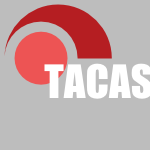 TACAS-2003-UchitelCKM #behaviour #named #tool support #using
TACAS-2003-UchitelCKM #behaviour #named #tool support #using- LTSA-MSC: Tool Support for Behaviour Model Elaboration Using Implied Scenarios (SU, RC, JK, JM), pp. 597–601.
 AGTIVE-2003-DottiRS #analysis #behaviour #fault #graph grammar #specification #using
AGTIVE-2003-DottiRS #analysis #behaviour #fault #graph grammar #specification #using- Specification and Analysis of Fault Behaviours Using Graph Grammars (FLD, LR, OMdS), pp. 120–133.
 AdaEurope-2003-LinM #behaviour #object-oriented #programming #type system
AdaEurope-2003-LinM #behaviour #object-oriented #programming #type system- A Behavioural Notion of Subtyping for Object-Oriented Programming in SPARK95 (TML, JAM), pp. 309–321.
 ECIR-2003-FinesilverR #behaviour #documentation
ECIR-2003-FinesilverR #behaviour #documentation- User Behaviour in the Context of Structured Documents (KF, JR), pp. 104–119.
 SEKE-2003-MicucciT #behaviour #component #framework
SEKE-2003-MicucciT #behaviour #component #framework- A Pattern-like Framework to Dynamically Change Components Behaviour (DM, AT), pp. 422–426.
 ECOOP-2003-ScharliDNB #behaviour #composition #named
ECOOP-2003-ScharliDNB #behaviour #composition #named- Traits: Composable Units of Behaviour (NS, SD, ON, APB), pp. 248–274.
 ESEC-FSE-2003-UchitelKM #behaviour #lts #using
ESEC-FSE-2003-UchitelKM #behaviour #lts #using- Behaviour model elaboration using partial labelled transition systems (SU, JK, JM), pp. 19–27.
 DATE-2002-GinesPRSM #behaviour #design #modelling #parametricity #reuse
DATE-2002-GinesPRSM #behaviour #design #modelling #parametricity #reuse- A Mixed-Signal Design Reuse Methodology Based on Parametric Behavioural Models with Non-Ideal Effects (AJG, EJP, AR, RS, NMM), pp. 310–314.
 DATE-2002-WilsonRZBK #behaviour #fault #modelling #using
DATE-2002-WilsonRZBK #behaviour #fault #modelling #using- Behavioural Modelling of Operational Amplifier Faults Using VHDL-AMS (PRW, JNR, MZ, ADB, YK), p. 1133.
 ICSM-2002-LaiM #behaviour #modelling
ICSM-2002-LaiM #behaviour #modelling- Behavioural Concern Modelling for Software Change Tasks (AL, GCM), pp. 112–121.
 IFL-2002-HammondM #behaviour #predict
IFL-2002-HammondM #behaviour #predict- Predictable Space Behaviour in FSM-Hume (KH, GM), pp. 1–16.
 ICGT-2002-BaldanK #approximate #behaviour #graph transformation
ICGT-2002-BaldanK #approximate #behaviour #graph transformation- Approximating the Behaviour of Graph Transformation Systems (PB, BK), pp. 14–29.
 ICGT-2002-MensDJ #behaviour #formal method #program transformation
ICGT-2002-MensDJ #behaviour #formal method #program transformation- Formalising Behaviour Preserving Program Transformations (TM, SD, DJ), pp. 286–301.
 CAiSE-2002-AoumeurS #behaviour #diagrams #logic #prototype #uml #using
CAiSE-2002-AoumeurS #behaviour #diagrams #logic #prototype #uml #using- Integrating and Rapid-Prototyping UML Structural and Behavioural Diagrams Using Rewriting Logic (NA, GS), pp. 296–310.
 EDOC-2002-MilosevicD #behaviour #contract #monitoring #on the
EDOC-2002-MilosevicD #behaviour #contract #monitoring #on the- On Expressing and Monitoring Behaviour in Contracts (ZM, RGD), pp. 3–14.
 ICML-2002-Ryan #automation #behaviour #learning #modelling #using
ICML-2002-Ryan #automation #behaviour #learning #modelling #using- Using Abstract Models of Behaviours to Automatically Generate Reinforcement Learning Hierarchies (MRKR), pp. 522–529.
 ICPR-v2-2002-ChengCK #behaviour #sequence #video
ICPR-v2-2002-ChengCK #behaviour #sequence #video- Recognising Human Running Behaviour in Sports Video Sequences (FC, WJC, JK), pp. 1017–1020.
 ICPR-v2-2002-Miyamori #behaviour #identification #retrieval #using #video
ICPR-v2-2002-Miyamori #behaviour #identification #retrieval #using #video- Improving Accuracy in Behaviour Identification for Content-Based Retrieval by Using Audio and Video Information (HM), pp. 826–830.
 ECOOP-2002-RedmondC #adaptation #behaviour
ECOOP-2002-RedmondC #adaptation #behaviour- Supporting Unanticipated Dynamic Adaptation of Application Behaviour (BR, VC), pp. 205–230.
 SAC-2002-GoldmanGBJ #behaviour #clustering #simulation
SAC-2002-GoldmanGBJ #behaviour #clustering #simulation- Individual-based simulation of the clustering behaviour of epidermal growth factor receptors (JPG, WJG, DB, CGJ), pp. 127–131.
 HPCA-2002-VeraX #behaviour
HPCA-2002-VeraX #behaviour- Let’s Study Whole-Program Cache Behaviour Analytically (XV, JX), pp. 175–186.
 ISSTA-2002-LatellaM #behaviour #consistency #diagrams #on the #statechart #testing #uml
ISSTA-2002-LatellaM #behaviour #consistency #diagrams #on the #statechart #testing #uml- On testing and conformance relations for UML statechart diagrams behaviours (DL, MM), pp. 144–153.
 CSMR-2001-KollmannG #behaviour #collaboration #diagrams #uml
CSMR-2001-KollmannG #behaviour #collaboration #diagrams #uml- Capturing Dynamic Program Behaviour with UML Collaboration Diagrams (RK, MG), pp. 58–67.
 ICALP-2001-Madhusudan #behaviour #branch #graph #reasoning #sequence
ICALP-2001-Madhusudan #behaviour #branch #graph #reasoning #sequence- Reasoning about Sequential and Branching Behaviours of Message Sequence Graphs (PM), pp. 809–820.
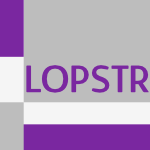 LOPSTR-2001-AlferesBLP #behaviour #logic programming
LOPSTR-2001-AlferesBLP #behaviour #logic programming- Computing Environment-Aware Agent Behaviours with Logic Program Updates (JJA, AB, JAL, LMP), pp. 216–232.
 SAC-2001-MunteanuR #behaviour #image #modelling
SAC-2001-MunteanuR #behaviour #image #modelling- Evolutionary image enhancement with user behaviour modeling (CM, ACR), pp. 316–320.
 ICSE-2001-UchitelK #behaviour #modelling
ICSE-2001-UchitelK #behaviour #modelling- A Workbench for Synthesising Behaviour Models from Scenarios (SU, JK), pp. 188–197.
 HPDC-2001-SkicewiczDS #behaviour #multi #query #using
HPDC-2001-SkicewiczDS #behaviour #multi #query #using- Multi-Resolution Resource Behaviour Queries Using Wavelets (JAS, PAD, JMS), pp. 395–394.
 SAT-2001-NuallainRB #behaviour #predict #satisfiability
SAT-2001-NuallainRB #behaviour #predict #satisfiability- Ensemble-based prediction of SAT search behaviour (BÓN, MdR, JvB), pp. 278–289.
 TLCA-2001-Hofmann #behaviour #bound #complexity #memory management #type system
TLCA-2001-Hofmann #behaviour #bound #complexity #memory management #type system- From Bounded Arithmetic to Memory Management: Use of Type Theory to Capture Complexity Classes and Space Behaviour (MH0), pp. 2–3.
 ESOP-2000-HondaVY #behaviour #data flow #process
ESOP-2000-HondaVY #behaviour #data flow #process- Secure Information Flow as Typed Process Behaviour (KH, VTV, NY), pp. 180–199.
 IFL-2000-Hammond #behaviour #bound #concurrent
IFL-2000-Hammond #behaviour #bound #concurrent- The Dynamic Properties of Hume: A Functionally-Based Concurrent Language with Bounded Time and Space Behaviour (KH), pp. 122–139.
 CSCW-2000-JacksonAMM #behaviour #video
CSCW-2000-JacksonAMM #behaviour #video- Impact of video frame rate on communicative behaviour in two and four party groups (MJ, AHA, RM, JM), pp. 11–20.
 ICML-2000-TodorovskiDSWG #behaviour #difference #equation
ICML-2000-TodorovskiDSWG #behaviour #difference #equation- Discovering the Structure of Partial Differential Equations from Example Behaviour (LT, SD, AS, JPW, DG), pp. 991–998.
 UML-2000-PetriuS #behaviour #consistency #diagrams #process #representation #sequence chart
UML-2000-PetriuS #behaviour #consistency #diagrams #process #representation #sequence chart- Consistent Behaviour Representation in Activity and Sequence Diagrams (DCP, YS), pp. 369–382.
 SAC-2000-PereiraC #adaptation #behaviour #information retrieval #learning
SAC-2000-PereiraC #adaptation #behaviour #information retrieval #learning- The Influence of Learning in the Behaviour of Information Retrieval Adaptive Agents (FBP, EC), pp. 452–457.
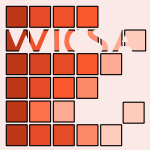 WICSA-1999-MageeKG #analysis #architecture #behaviour
WICSA-1999-MageeKG #analysis #architecture #behaviour- Behaviour Analysis of Software Architectures (JM, JK, DG), pp. 35–50.
 ITiCSE-1999-CabezaCR #behaviour #education #memory management #named
ITiCSE-1999-CabezaCR #behaviour #education #memory management #named- CacheSim: a cache simulator for teaching memory hierarchy behaviour (MLCC, MIGC, MLR), p. 181.
 DLT-1999-CaludeC #automaton #behaviour #bisimulation #nondeterminism
DLT-1999-CaludeC #automaton #behaviour #bisimulation #nondeterminism- Bisimulations and behaviour of nondeterministic automata (CC, EC), pp. 60–70.
 FM-v2-1999-MoriF #behaviour #specification #verification
FM-v2-1999-MoriF #behaviour #specification #verification- Verifying Behavioural Specifications in CafeOBJ Environment (AM, KF), pp. 1625–1643.
 IFM-1999-Fidge #behaviour #modelling
IFM-1999-Fidge #behaviour #modelling- Modelling Discrete Behaviour in a Continuous-Time Formalism (CJF), pp. 170–188.
 IFM-1999-PolHJ #behaviour #composition #specification
IFM-1999-PolHJ #behaviour #composition #specification- Modular Formal Specification of Data and Behaviour (JvdP, JH, EDdJ), pp. 109–128.
 HCI-CCAD-1999-TrousseJK #approach #behaviour #recommendation #similarity #using
HCI-CCAD-1999-TrousseJK #approach #behaviour #recommendation #similarity #using- Using user behaviour similarity for recommendation computation: the broadway approach (BT, MJ, RK), pp. 85–89.
 DATE-1998-RosenbergerH #approach #behaviour #functional #modelling #simulation
DATE-1998-RosenbergerH #approach #behaviour #functional #modelling #simulation- A Systems Theoretic Approach to Behavioural Modeling and Simulation of Analog Functional Blocks (RR, SAH), pp. 721–728.
 FASE-1998-NielsonAN #analysis #behaviour #case study #safety
FASE-1998-NielsonAN #analysis #behaviour #case study #safety- Behaviour Analysis and Safety Conditions: A Case Study in CML (HRN, TA, FN), pp. 255–269.
 WRLA-1998-MatsumotoF #automation #behaviour #induction #testing #towards #verification
WRLA-1998-MatsumotoF #automation #behaviour #induction #testing #towards #verification- Test set coinduction — Toward automated verification of behavioural properties (MM, KF), pp. 242–262.
 ICALP-1998-KarhumakiLP #behaviour #infinity #word
ICALP-1998-KarhumakiLP #behaviour #infinity #word- Locally Periodic Infinite Words and a Chaotic Behaviour (JK, AL, WP), pp. 421–430.
 ACIR-1998-ManglanoBR #behaviour #evaluation #interface #modelling
ACIR-1998-ManglanoBR #behaviour #evaluation #interface #modelling- Evaluation of Interfaces for IRS: Modelling End-User Searching Behaviour (VM, MB, SER).
 ICPR-1998-HosieVW #behaviour #detection #visual notation
ICPR-1998-HosieVW #behaviour #detection #visual notation- Classifying and detecting group behaviour from visual surveillance data (RH, SV, GAWW), pp. 602–604.
 CAiSE-1997-CathalaP #behaviour #how #why
CAiSE-1997-CathalaP #behaviour #how #why- Preserving Behaviour: Why and How (FC, PP), pp. 333–346.
 CAiSE-1997-VermeerA #behaviour #database #specification
CAiSE-1997-VermeerA #behaviour #database #specification- Behaviour Specification in Database Interoperation (MWWV, PMGA), pp. 61–74.
 RWLW-1996-Diaconescu #behaviour #logic #specification
RWLW-1996-Diaconescu #behaviour #logic #specification- Foundations of behavioural specification in rewriting logic (RD), pp. 226–245.
 ICPR-1996-WeberVS #behaviour #mobile
ICPR-1996-WeberVS #behaviour #mobile- Insect inspired behaviours for the autonomous control of mobile robots (KW, SV, MVS), pp. 156–160.
 SEKE-1996-GillerHT #behaviour #visual notation
SEKE-1996-GillerHT #behaviour #visual notation- Scriptless Behaviour Definition of Visual Objects (VG, GH, MT), pp. 499–505.
 CAV-1996-CapellmannDFGNO #abstraction #behaviour #case study #detection #interactive #network #verification
CAV-1996-CapellmannDFGNO #abstraction #behaviour #case study #detection #interactive #network #verification- Verification by Behaviour Abstraction — A Case Study of Service Interaction Detection in Intelligent Telephone Networks (CC, RD, FFV, RGE, UN, PO), pp. 466–469.
 DAC-1995-SilburtPBNDW #behaviour #concurrent #design #hardware #modelling #simulation
DAC-1995-SilburtPBNDW #behaviour #concurrent #design #hardware #modelling #simulation- Accelerating Concurrent Hardware Design with Behavioural Modelling and System Simulation (AS, IP, JB, SN, MD, GW), pp. 528–533.
 ESOP-J-1994-BidoitHW95 #behaviour #specification
ESOP-J-1994-BidoitHW95 #behaviour #specification- Behavioural and Abstractor Specifications (MB, RH, MW), pp. 149–186.
 CAiSE-1995-OliveS #behaviour #concept #modelling
CAiSE-1995-OliveS #behaviour #concept #modelling- A Method for Explaining the Behaviour of Conceptual Models (AO, MRS), pp. 12–25.
 SAC-1995-BanachP #behaviour #graph grammar #linear #source code
SAC-1995-BanachP #behaviour #graph grammar #linear #source code- Linear behaviour of term graph rewriting programs (RB, GAP), pp. 157–163.
 SAC-1995-GyseghemC #behaviour #fuzzy
SAC-1995-GyseghemC #behaviour #fuzzy- Fuzzy behaviour and relationships in a fuzzy OODB-model (NVG, RMMDC), pp. 503–507.
 CAV-1995-AndersenV #behaviour #fixpoint #performance #using
CAV-1995-AndersenV #behaviour #fixpoint #performance #using- Efficient Checking of Behavioural Relations and Modal Assertions using Fixed-Point Inversion (HRA, BV), pp. 142–154.
 ICLP-1995-DekhtyarD #behaviour #database #deduction
ICLP-1995-DekhtyarD #behaviour #database #deduction- Dynamic Deductive Data Bases With Steady Behaviour (MID, AJD), pp. 183–197.
 EDAC-1994-MoserNAAP #approach #behaviour #modelling #visual notation
EDAC-1994-MoserNAAP #approach #behaviour #modelling #visual notation- A Graphical Approach to Analogue Behavioural Modelling (VM, PN, HPA, LA, FP), pp. 535–539.
 ESOP-1994-BidoitHW #behaviour #semantics
ESOP-1994-BidoitHW #behaviour #semantics- Characterizing Behavioural Semantics and Abstractor Semantics (MB, RH, MW), pp. 105–119.
 FME-1994-PaechR #automaton #behaviour #concept #modelling #refinement
FME-1994-PaechR #automaton #behaviour #concept #modelling #refinement- A new Concept of Refinement used for Behaviour Modelling with Automata (BP, BR), pp. 154–174.
 FME-1994-RossL #behaviour #modelling #precise #process
FME-1994-RossL #behaviour #modelling #precise #process- A Precise Examination of the Behaviour of Process Models (KJR, PAL), pp. 251–270.
 LFP-1994-StefanovicM #behaviour #ml #standard
LFP-1994-StefanovicM #behaviour #ml #standard- Characterization of Object Behaviour in Standard ML of New Jersey (DS, JEBM), pp. 43–54.
 CAiSE-1994-ThiemeS #approach #behaviour
CAiSE-1994-ThiemeS #approach #behaviour- An Approach to Schema Integratioin Based on Transformations and Behaviour (CT, AS), pp. 297–310.
 ICML-1994-Valdes-PerezP #behaviour #heuristic
ICML-1994-Valdes-PerezP #behaviour #heuristic- A Powerful Heuristic for the Discovery of Complex Patterned Behaviour (REVP, AP), pp. 326–334.
 SIGIR-1994-MoritaS #analysis #behaviour #information management #retrieval
SIGIR-1994-MoritaS #analysis #behaviour #information management #retrieval- Information Filtering Based on User Behaviour Analysis and Best Match Text Retrieval (MM, YS), pp. 272–281.
 TOOLS-EUROPE-1994-RuperezJA #behaviour #object-oriented #rule-based #simulation #using
TOOLS-EUROPE-1994-RuperezJA #behaviour #object-oriented #rule-based #simulation #using- Embedding of Rule-based Expert System Capabilities in Object-Oriented Applications by Using or Simulating Active Behaviour (RFR, CJ, JRZA), pp. 315–327.
 ALP-1994-BidoitH #behaviour #first-order #logic #proving #standard #theorem
ALP-1994-BidoitH #behaviour #first-order #logic #proving #standard #theorem- Proving Behavioural Theorems with Standard First-Order Logic (MB, RH), pp. 41–58.
 LOPSTR-1994-GilbertHZ #behaviour #source code #specification
LOPSTR-1994-GilbertHZ #behaviour #source code #specification- Transforming Specifications of Observable Behaviour into Programs (DRG, CJH, JZ), pp. 88–103.
 ICSE-1994-CheungK #analysis #behaviour #distributed #effectiveness
ICSE-1994-CheungK #analysis #behaviour #distributed #effectiveness- An Integrated Method for Effective Behaviour Analysis of Distributed Systems (SCC, JK), pp. 309–320.
 ILPS-1994-DekhtyarD #behaviour #database #deduction #on the
ILPS-1994-DekhtyarD #behaviour #database #deduction #on the- On Stable Behaviour of Dynamic Deductive Data Bases (MID, AJD), p. 677.
 HCI-SHI-1993-Edmondson #behaviour #human-computer #interactive #taxonomy
HCI-SHI-1993-Edmondson #behaviour #human-computer #interactive #taxonomy- A Taxonomy for Human Behaviour and Human-Computer Interaction (WHE), pp. 885–890.
 ICSE-1993-WangP #behaviour #simulation
ICSE-1993-WangP #behaviour #simulation- Simulating the Behaviour of Software Modules by Trace Rewriting (YW, DLP), pp. 14–23.
 ICALP-1992-MollerT #abstraction #behaviour
ICALP-1992-MollerT #abstraction #behaviour- Behavioural Abstraction in TCCS (FM, CMNT), pp. 559–570.
 ECOOP-1992-HartmannJS #behaviour
ECOOP-1992-HartmannJS #behaviour- Aggregation in a Behaviour Oriented Object Model (TH, RJ, GS), pp. 57–77.
 IWPTS-1992-WittemanWB #behaviour #nondeterminism
IWPTS-1992-WittemanWB #behaviour #nondeterminism- Non-Deterministic and Default Behaviour (MFW, RCvW, SRB), pp. 275–288.
 ICALP-1991-CleavelandS #behaviour
ICALP-1991-CleavelandS #behaviour- Computing Behavioural Relations, Logically (RC, BS), pp. 127–138.
 VDME-1991-1-Butler #behaviour #csp
VDME-1991-1-Butler #behaviour #csp- Behavioural Extension for CSP (MJB), pp. 254–267.
 LOPSTR-1991-LecoutreDL #abstract interpretation #behaviour #logic programming #recursion #source code
LOPSTR-1991-LecoutreDL #abstract interpretation #behaviour #logic programming #recursion #source code- Abstract Interpretation and Recursive Behaviour of Logic Programs (CL, PD, PL), pp. 147–166.
 CAV-1991-FernandezM #behaviour #on the fly #verification
CAV-1991-FernandezM #behaviour #on the fly #verification- “On the Fly” Verification of Behavioural Equivalences and Preorders (JCF, LM), pp. 181–191.
 CAV-1991-NicolaFGR #behaviour #concurrent #framework #logic #verification
CAV-1991-NicolaFGR #behaviour #concurrent #framework #logic #verification- An Action Based Framework for Verifying Logical and Behavioural Properties of Concurrent Systems (RDN, AF, SG, GR), pp. 37–47.
 ICALP-1990-Parrow #behaviour #network
ICALP-1990-Parrow #behaviour #network- Structural and Behavioural Equivalences of Networks (JP), pp. 540–552.
 OOPSLA-ECOOP-1990-HelmHG #behaviour #composition #contract #named #object-oriented #specification
OOPSLA-ECOOP-1990-HelmHG #behaviour #composition #contract #named #object-oriented #specification- Contracts: Specifying Behavioural Compositions in Object-Oriented Systems (RH, IMH, DG), pp. 169–180.
 DAC-1989-BolsensRCM #analysis #behaviour #debugging #logic
DAC-1989-BolsensRCM #analysis #behaviour #debugging #logic- Electrical Debugging of Synchronous MOS VLSI Circuits Exploiting Analysis of the Intended Logic Behaviour (IB, WDR, LJMC, HDM), pp. 513–518.
 NACLP-1989-GaifmanMS #behaviour #concurrent #constraints #logic programming #semantics #source code
NACLP-1989-GaifmanMS #behaviour #concurrent #constraints #logic programming #semantics #source code- Reactive Behaviour Semantics for Concurrent Constraint Logic Programs (HG, MJM, EYS), pp. 553–569.
 DAC-1988-MadreB #behaviour #comparison #correctness #proving #using
DAC-1988-MadreB #behaviour #comparison #correctness #proving #using- Proving Circuit Correctness Using Formal Comparison Between Expected and Extracted Behaviour (JCM, JPB), pp. 205–210.
 ICALP-1988-Thiagarajan #aspect-oriented #behaviour
ICALP-1988-Thiagarajan #aspect-oriented #behaviour- Some Behavioural Aspects of Net Theory (PST), pp. 630–653.
 SIGIR-1988-KokB #behaviour #retrieval
SIGIR-1988-KokB #behaviour #retrieval- Retrieval Based on User Behaviour (AJK, AMB), pp. 343–357.
 VLDB-1987-LingatNR #behaviour #database
VLDB-1987-LingatNR #behaviour #database- Behaviour Management in Database Applications (JYL, PN, CR), pp. 185–196.
 FPCA-1987-DarlingtonW #behaviour #functional
FPCA-1987-DarlingtonW #behaviour #functional- Controlling the behaviour of functional language systems (JD, RLW), pp. 278–300.
 LICS-1987-Howe #behaviour
LICS-1987-Howe #behaviour- The Computational Behaviour of Girard’s Paradox (DJH), pp. 205–214.
 SIGMOD-1986-Lipeck #behaviour #database #specification
SIGMOD-1986-Lipeck #behaviour #database #specification- Stepwise Specification of Dynamic Database Behaviour (UWL), pp. 387–397.
 STOC-1985-BollobasS #algorithm #behaviour #on the #set
STOC-1985-BollobasS #algorithm #behaviour #on the #set- On the Expected Behaviour of Disjoint Set Union Algorithms (BB, IS), pp. 224–231.
 ICALP-1984-Girault-Beauquier #automaton #behaviour #finite #infinity
ICALP-1984-Girault-Beauquier #automaton #behaviour #finite #infinity- Some Results About Finite and Infinite Behaviours of a Pushdown Automaton (DB), pp. 187–195.
 SIGIR-1984-KraftB #behaviour #information retrieval #roadmap
SIGIR-1984-KraftB #behaviour #information retrieval #roadmap- Advances in a Bayesian Decision Model of User Stopping Behaviour for Scanning the Output of an Information Retrieval System (DHK, DAB), pp. 421–433.
 ICALP-1983-Arnold #behaviour #infinity
ICALP-1983-Arnold #behaviour #infinity- Topological Characterizations of Infinite Behaviours of Transition Systems (AA), pp. 28–38.
 ICALP-1983-BrookesR #behaviour #equivalence #logic #programming
ICALP-1983-BrookesR #behaviour #equivalence #logic #programming- Behavioural Equivalence Relations Induced by Programming Logics (SDB, WCR), pp. 97–108.
 VLDB-1981-Brodie #behaviour #database #modelling #on the #semantics
VLDB-1981-Brodie #behaviour #database #modelling #on the #semantics- On Modelling Behavioural Semantics of Databases (MLB), pp. 32–42.
 CADE-1980-Bruynooghe #analysis #behaviour #dependence #logic programming #source code
CADE-1980-Bruynooghe #analysis #behaviour #dependence #logic programming #source code- Analysis of Dependencies to Improve the Behaviour of Logic Programs (MB), pp. 293–305.
 SOSP-1967-Denning68 #behaviour #set
SOSP-1967-Denning68 #behaviour #set- The Working Set Model for Program Behaviour (PJD), pp. 323–333.
 DATE-2015-DaneseGP #automation #behaviour #execution #modelling
DATE-2015-DaneseGP #automation #behaviour #execution #modelling HT-2015-ApaolazaHJ #analysis #behaviour #interactive #low level #web
HT-2015-ApaolazaHJ #analysis #behaviour #interactive #low level #web HT-2015-BurelMHA #behaviour #community #online #predict
HT-2015-BurelMHA #behaviour #community #online #predict SEFM-2015-BlomHZ #behaviour #concurrent #functional #source code #verification
SEFM-2015-BlomHZ #behaviour #concurrent #functional #source code #verification CHI-2015-DamianTBSLA #behaviour #feedback #interactive #realtime #social #using
CHI-2015-DamianTBSLA #behaviour #feedback #interactive #realtime #social #using DUXU-DD-2015-OliveiraMMM #analysis #behaviour #design
DUXU-DD-2015-OliveiraMMM #analysis #behaviour #design DUXU-UI-2015-MarczalJ #analysis #behaviour #mobile
DUXU-UI-2015-MarczalJ #analysis #behaviour #mobile SIGIR-2015-Barreda-Angeles #behaviour #latency
SIGIR-2015-Barreda-Angeles #behaviour #latency SAC-2015-DuarteBGCT #behaviour #generative #towards
SAC-2015-DuarteBGCT #behaviour #generative #towards ASPLOS-2015-AlglaveBDGKPSW #behaviour #concurrent #gpu #programming
ASPLOS-2015-AlglaveBDGKPSW #behaviour #concurrent #gpu #programming CSL-2015-SalvatiW #behaviour #higher-order #source code
CSL-2015-SalvatiW #behaviour #higher-order #source code ICST-2015-AliY #behaviour #cyber-physical #evolution #modelling #named #nondeterminism #testing
ICST-2015-AliY #behaviour #cyber-physical #evolution #modelling #named #nondeterminism #testing LICS-2015-BrazdilKKN #behaviour #probability
LICS-2015-BrazdilKKN #behaviour #probability FASE-2014-OuederniSCP #behaviour #named
FASE-2014-OuederniSCP #behaviour #named SEFM-2014-LaibinisTGMK #behaviour #formal method #modelling #verification
SEFM-2014-LaibinisTGMK #behaviour #formal method #modelling #verification SEFM-2014-PunSS #behaviour #concurrent
SEFM-2014-PunSS #behaviour #concurrent CSCW-2014-QuattroneMC #behaviour
CSCW-2014-QuattroneMC #behaviour HCI-AIMT-2014-NavarrettaL #behaviour #interactive #multimodal
HCI-AIMT-2014-NavarrettaL #behaviour #interactive #multimodal HCI-AIMT-2014-WuttkeM #adaptation #behaviour #communication
HCI-AIMT-2014-WuttkeM #adaptation #behaviour #communication CAiSE-2014-PikaWFHLA #behaviour #framework #using
CAiSE-2014-PikaWFHLA #behaviour #framework #using ICEIS-v1-2014-Rios-AguilarLP #behaviour #information management #mobile #monitoring #using
ICEIS-v1-2014-Rios-AguilarLP #behaviour #information management #mobile #monitoring #using ICPR-2014-AryafarLA #behaviour
ICPR-2014-AryafarLA #behaviour ICPR-2014-BicegoRFRG #behaviour #using
ICPR-2014-BicegoRFRG #behaviour #using ICPR-2014-NathLHWBS #automation #behaviour #recognition #social
ICPR-2014-NathLHWBS #automation #behaviour #recognition #social SEKE-2014-FariasONCM #behaviour #case study
SEKE-2014-FariasONCM #behaviour #case study SIGIR-2014-Kharitonov #behaviour #evaluation #modelling #online #web
SIGIR-2014-Kharitonov #behaviour #evaluation #modelling #online #web SKY-2014-Fernandez-Utrilla #behaviour #predict #web
SKY-2014-Fernandez-Utrilla #behaviour #predict #web FSE-2014-CordyHLSDL #abstraction #behaviour #modelling #product line #refinement
FSE-2014-CordyHLSDL #abstraction #behaviour #modelling #product line #refinement SPLC-2014-ShakerA #behaviour #interactive #product line
SPLC-2014-ShakerA #behaviour #interactive #product line LICS-CSL-2014-AsarinBDDM #behaviour #logic
LICS-CSL-2014-AsarinBDDM #behaviour #logic TAP-2014-DiepenbeckKSD #behaviour #development #testing #verification
TAP-2014-DiepenbeckKSD #behaviour #development #testing #verification CASE-2013-RoyerBTT #assessment #behaviour #energy #modelling #multi #simulation #using
CASE-2013-RoyerBTT #assessment #behaviour #energy #modelling #multi #simulation #using MSR-2013-GrantB #behaviour #empirical
MSR-2013-GrantB #behaviour #empirical WCRE-2013-AntonyAC #approach #behaviour #clone detection #detection #modelling
WCRE-2013-AntonyAC #approach #behaviour #clone detection #detection #modelling IFM-2013-RuksenasCH #behaviour #evaluation #interactive #predict
IFM-2013-RuksenasCH #behaviour #evaluation #interactive #predict IFM-2013-TaylorBD #automation #behaviour #erlang
IFM-2013-TaylorBD #automation #behaviour #erlang SEFM-2013-BennaceurCIJ #automation #behaviour #ontology #reasoning #synthesis
SEFM-2013-BennaceurCIJ #automation #behaviour #ontology #reasoning #synthesis SEFM-2013-SargolzaeiSAA #approximate #behaviour #web #web service
SEFM-2013-SargolzaeiSAA #approximate #behaviour #web #web service SFM-2013-BortolussiH #approximate #behaviour #markov #modelling
SFM-2013-BortolussiH #approximate #behaviour #markov #modelling CHI-2013-BullingWG #behaviour #named #recognition #visual notation
CHI-2013-BullingWG #behaviour #named #recognition #visual notation DUXU-PMT-2013-KarahasanovicF #2d #approach #behaviour #experience #modelling #network
DUXU-PMT-2013-KarahasanovicF #2d #approach #behaviour #experience #modelling #network CAiSE-2013-SuriadiWOHD #behaviour #case study #comprehension #process #scalability
CAiSE-2013-SuriadiWOHD #behaviour #case study #comprehension #process #scalability SIGIR-2013-MoshfeghiJ #behaviour #effectiveness #feedback #using
SIGIR-2013-MoshfeghiJ #behaviour #effectiveness #feedback #using MoDELS-2013-PiresPWD #behaviour #embedded #source code #verification
MoDELS-2013-PiresPWD #behaviour #embedded #source code #verification MoDELS-2013-PiresPWD #behaviour #embedded #source code #verification
MoDELS-2013-PiresPWD #behaviour #embedded #source code #verification ICST-2013-CzemerinskiBU #abstraction #behaviour #black box
ICST-2013-CzemerinskiBU #abstraction #behaviour #black box CASE-2012-WigstromL #behaviour #scheduling
CASE-2012-WigstromL #behaviour #scheduling ITiCSE-2012-GomesSM #behaviour #case study #learning #student #towards
ITiCSE-2012-GomesSM #behaviour #case study #learning #student #towards ESOP-2012-ChenCJK #behaviour #component #composition #specification
ESOP-2012-ChenCJK #behaviour #component #composition #specification IFM-2012-TianBB #behaviour #detection #game studies #multi
IFM-2012-TianBB #behaviour #detection #game studies #multi CHI-2012-HenzeRB #behaviour #mobile #type system #using
CHI-2012-HenzeRB #behaviour #mobile #type system #using SPLC-2012-CordySHL #behaviour #modelling #product line #realtime #verification
SPLC-2012-CordySHL #behaviour #modelling #product line #realtime #verification ISMM-2012-SeweMSABRG #behaviour #comparison #java #memory management #scala #source code
ISMM-2012-SeweMSABRG #behaviour #comparison #java #memory management #scala #source code ICST-2012-FraserW #behaviour #testing
ICST-2012-FraserW #behaviour #testing ICTSS-2012-TaylorHBD #behaviour #testing #using
ICTSS-2012-TaylorHBD #behaviour #testing #using CASE-2011-Incerti #behaviour
CASE-2011-Incerti #behaviour HT-2011-IturriozDA #behaviour
HT-2011-IturriozDA #behaviour ICPC-2011-SyerAH #behaviour #case study #comprehension #industrial
ICPC-2011-SyerAH #behaviour #case study #comprehension #industrial ICPC-2011-YingR #behaviour
ICPC-2011-YingR #behaviour PLDI-2011-BudiLJL #behaviour #debugging #named
PLDI-2011-BudiLJL #behaviour #debugging #named CHI-2011-CoyleMDO #behaviour #game studies
CHI-2011-CoyleMDO #behaviour #game studies DHM-2011-TangoMAP #automation #behaviour #classification
DHM-2011-TangoMAP #automation #behaviour #classification HCD-2011-AhramK #behaviour #design #modelling #network #social
HCD-2011-AhramK #behaviour #design #modelling #network #social CIKM-2011-ONeilPA #behaviour #game studies #named #query
CIKM-2011-ONeilPA #behaviour #game studies #named #query ICSE-2011-CasoBGU #abstraction #behaviour #validation
ICSE-2011-CasoBGU #abstraction #behaviour #validation ICSE-2011-DIppolitoBPU #behaviour #modelling #synthesis
ICSE-2011-DIppolitoBPU #behaviour #modelling #synthesis ICSE-2011-HolmesN #behaviour #identification
ICSE-2011-HolmesN #behaviour #identification ICSE-2011-HolmesN11a #behaviour #identification
ICSE-2011-HolmesN11a #behaviour #identification ICSE-2011-PirzadehH #analysis #behaviour #framework
ICSE-2011-PirzadehH #analysis #behaviour #framework CBSE-2010-LauNTR #behaviour #composition #design pattern
CBSE-2010-LauNTR #behaviour #composition #design pattern ICGT-2010-HermannEOG #analysis #behaviour #formal method #functional #graph grammar #model transformation
ICGT-2010-HermannEOG #analysis #behaviour #formal method #functional #graph grammar #model transformation ICGT-2010-Khomenko #behaviour
ICGT-2010-Khomenko #behaviour CHI-2010-JensenST #behaviour #navigation
CHI-2010-JensenST #behaviour #navigation CAiSE-2010-SerralVP #adaptation #behaviour #evolution #runtime
CAiSE-2010-SerralVP #adaptation #behaviour #evolution #runtime CAiSE-2010-WeidlichPDM #behaviour #metric #process
CAiSE-2010-WeidlichPDM #behaviour #metric #process KDIR-2010-Codina-FilbaN #analysis #behaviour #internet #query #web
KDIR-2010-Codina-FilbaN #analysis #behaviour #internet #query #web KDIR-2010-Onem #behaviour #classification #detection #network
KDIR-2010-Onem #behaviour #classification #detection #network SIGIR-2010-ClementsSVR #behaviour #predict #using
SIGIR-2010-ClementsSVR #behaviour #predict #using ECMFA-2010-SterrittCC #behaviour #design pattern #precise #specification
ECMFA-2010-SterrittCC #behaviour #design pattern #precise #specification PPDP-2010-Barbanerad #behaviour
PPDP-2010-Barbanerad #behaviour SAC-2010-MassinkHL #analysis #behaviour #scalability
SAC-2010-MassinkHL #analysis #behaviour #scalability FSE-2010-DIppolitoBPU #behaviour #modelling #synthesis
FSE-2010-DIppolitoBPU #behaviour #modelling #synthesis ICSE-2010-Caso #behaviour #re-engineering #validation
ICSE-2010-Caso #behaviour #re-engineering #validation ICSE-2010-Caso10a #behaviour #re-engineering #validation
ICSE-2010-Caso10a #behaviour #re-engineering #validation ICSE-2010-SteimannT #behaviour #constraints #generative
ICSE-2010-SteimannT #behaviour #constraints #generative QoSA-2009-ChanP #architecture #behaviour #composition #predict #process
QoSA-2009-ChanP #architecture #behaviour #composition #predict #process DocEng-2009-BattleB #behaviour #concurrent #documentation #modelling #state machine
DocEng-2009-BattleB #behaviour #concurrent #documentation #modelling #state machine FASE-2009-AguirreFMMW #alloy #behaviour #specification #using
FASE-2009-AguirreFMMW #alloy #behaviour #specification #using ICPC-2009-MurphyVS #behaviour #process #programming #using
ICPC-2009-MurphyVS #behaviour #process #programming #using ICSM-2009-AmalfitanoFT #behaviour #internet #modelling #reverse engineering
ICSM-2009-AmalfitanoFT #behaviour #internet #modelling #reverse engineering ICALP-v2-2009-AcciaiB #behaviour #infinity #safety #π-calculus
ICALP-v2-2009-AcciaiB #behaviour #infinity #safety #π-calculus CEFP-2009-CesariniT #behaviour #design pattern #erlang #process #programming
CEFP-2009-CesariniT #behaviour #design pattern #erlang #process #programming CEFP-2009-TothBHLTK #behaviour #dependence #erlang #graph #impact analysis #source code #using
CEFP-2009-TothBHLTK #behaviour #dependence #erlang #graph #impact analysis #source code #using SIGIR-2009-TomsF #analysis #behaviour #predict
SIGIR-2009-TomsF #analysis #behaviour #predict ECMDA-FA-2009-DanielePS #approach #behaviour #mobile #modelling
ECMDA-FA-2009-DanielePS #approach #behaviour #mobile #modelling ESEC-FSE-2009-PaveseBU #analysis #behaviour #modelling #probability
ESEC-FSE-2009-PaveseBU #analysis #behaviour #modelling #probability VMCAI-2009-GurovH #behaviour #source code
VMCAI-2009-GurovH #behaviour #source code CBSE-2008-KuperbergKR #behaviour #black box #component #modelling #parametricity #performance #predict #using
CBSE-2008-KuperbergKR #behaviour #black box #component #modelling #parametricity #performance #predict #using CASE-2008-HeribanTGF #behaviour
CASE-2008-HeribanTGF #behaviour DATE-2008-AliWWB #approach #behaviour #modelling #performance
DATE-2008-AliWWB #approach #behaviour #modelling #performance FASE-2008-MellitiPM #adaptation #automation #behaviour #composition #distributed #semantics
FASE-2008-MellitiPM #adaptation #automation #behaviour #composition #distributed #semantics SAS-2008-NanzNN #abstraction #behaviour #concurrent
SAS-2008-NanzNN #abstraction #behaviour #concurrent SEFM-2008-RuksenasCB #behaviour #game studies #modelling
SEFM-2008-RuksenasCB #behaviour #game studies #modelling SEFM-2008-SampathRRS #behaviour #code generation #testing
SEFM-2008-SampathRRS #behaviour #code generation #testing CHI-2008-LindleyCB #behaviour #experience #game studies #social
CHI-2008-LindleyCB #behaviour #experience #game studies #social CIKM-2008-LoekitoB #behaviour #mining
CIKM-2008-LoekitoB #behaviour #mining ICPR-2008-DarbyLC #behaviour
ICPR-2008-DarbyLC #behaviour ICPR-2008-LablackD #analysis #behaviour
ICPR-2008-LablackD #analysis #behaviour ECMDA-FA-2008-EngelsKRSSW #behaviour #model transformation #process #towards #uml
ECMDA-FA-2008-EngelsKRSSW #behaviour #model transformation #process #towards #uml MoDELS-2008-LuongLC #behaviour #consistency #development #implementation #incremental #modelling
MoDELS-2008-LuongLC #behaviour #consistency #development #implementation #incremental #modelling MoDELS-2008-LuongLC #behaviour #consistency #development #implementation #incremental #modelling
MoDELS-2008-LuongLC #behaviour #consistency #development #implementation #incremental #modelling QAPL-2008-ZhangZ #behaviour #pseudo
QAPL-2008-ZhangZ #behaviour #pseudo SAC-2008-DirgahayuQS #behaviour #design #enterprise #integration #interactive
SAC-2008-DirgahayuQS #behaviour #design #enterprise #integration #interactive FSE-2008-FischbeinU #behaviour #modelling #on the
FSE-2008-FischbeinU #behaviour #modelling #on the HT-2007-BrownBFE #behaviour
HT-2007-BrownBFE #behaviour FoSSaCS-2007-BreugelSW #approximate #behaviour #probability #pseudo
FoSSaCS-2007-BreugelSW #approximate #behaviour #probability #pseudo IFM-2007-CavarraW #behaviour #modelling #specification
IFM-2007-CavarraW #behaviour #modelling #specification SEFM-2007-CamaraSC #adaptation #behaviour #composition #runtime #transaction
SEFM-2007-CamaraSC #adaptation #behaviour #composition #runtime #transaction SEFM-2007-Hameurlain #behaviour #component #flexibility #protocol #specification
SEFM-2007-Hameurlain #behaviour #component #flexibility #protocol #specification HCI-IPT-2007-ZaharakisK #behaviour #interactive #social #ubiquitous
HCI-IPT-2007-ZaharakisK #behaviour #interactive #social #ubiquitous HIMI-IIE-2007-ZhangC #analysis #behaviour #collaboration
HIMI-IIE-2007-ZhangC #analysis #behaviour #collaboration EDOC-2007-LiningtonL #approach #behaviour #modelling #security #using
EDOC-2007-LiningtonL #approach #behaviour #modelling #security #using ICEIS-EIS-2007-MoralesTA #behaviour #consistency #modelling #semantics #uml
ICEIS-EIS-2007-MoralesTA #behaviour #consistency #modelling #semantics #uml ICEIS-SAIC-2007-BelbezeS #behaviour #web #web service
ICEIS-SAIC-2007-BelbezeS #behaviour #web #web service SIGIR-2007-Huggett #behaviour #modelling
SIGIR-2007-Huggett #behaviour #modelling QAPL-2007-Argent-KatwalaB #behaviour #network
QAPL-2007-Argent-KatwalaB #behaviour #network REFSQ-2007-SorbyN #behaviour #framework #towards
REFSQ-2007-SorbyN #behaviour #framework #towards ESEC-FSE-2007-FantechiG #behaviour #product line
ESEC-FSE-2007-FantechiG #behaviour #product line ICSE-2007-UchitelBC #behaviour #synthesis
ICSE-2007-UchitelBC #behaviour #synthesis LCTES-2007-WaltherHN #behaviour #embedded #realtime
LCTES-2007-WaltherHN #behaviour #embedded #realtime QoSA-2006-DuzbayevP #behaviour #predict #runtime
QoSA-2006-DuzbayevP #behaviour #predict #runtime ICPC-2006-Hamou-LhadjL #behaviour #comprehension #scalability
ICPC-2006-Hamou-LhadjL #behaviour #comprehension #scalability FM-2006-BrunetCU #behaviour #model merging
FM-2006-BrunetCU #behaviour #model merging AdaEurope-2006-ValpereiroP #behaviour
AdaEurope-2006-ValpereiroP #behaviour ECIR-2006-WenRB #behaviour #online #topic
ECIR-2006-WenRB #behaviour #online #topic ICPR-v1-2006-CarterYF #approach #behaviour #markov #recognition
ICPR-v1-2006-CarterYF #approach #behaviour #markov #recognition ICPR-v3-2006-Law-ToGBB #behaviour #detection #video
ICPR-v3-2006-Law-ToGBB #behaviour #detection #video SIGIR-2006-FreundT #behaviour #enterprise
SIGIR-2006-FreundT #behaviour #enterprise QAPL-2006-SotinCJ #behaviour #java #static analysis
QAPL-2006-SotinCJ #behaviour #java #static analysis DATE-2005-Ruiz-SautuaMMH #behaviour #performance #synthesis
DATE-2005-Ruiz-SautuaMMH #behaviour #performance #synthesis ITiCSE-2005-Jimenez-DiazGGG #behaviour #comprehension #visualisation
ITiCSE-2005-Jimenez-DiazGGG #behaviour #comprehension #visualisation IWPC-2005-OBrienB #approach #behaviour #empirical #modelling
IWPC-2005-OBrienB #approach #behaviour #empirical #modelling IWPC-2005-WalkinshawRW #behaviour #comprehension #object-oriented #perspective #source code
IWPC-2005-WalkinshawRW #behaviour #comprehension #object-oriented #perspective #source code CIAA-2005-BaillyCS #behaviour #communication #component #composition #contract
CIAA-2005-BaillyCS #behaviour #communication #component #composition #contract ICALP-2005-BreugelHMW #approach #behaviour #pseudo
ICALP-2005-BreugelHMW #approach #behaviour #pseudo SEFM-2005-Hameurlain #behaviour #component #on the #protocol
SEFM-2005-Hameurlain #behaviour #component #on the #protocol CEFP-2005-Hammond #approach #behaviour #bound #functional #programming
CEFP-2005-Hammond #approach #behaviour #bound #functional #programming SEKE-2005-WangM #behaviour #web
SEKE-2005-WangM #behaviour #web SEKE-2005-Zhu #behaviour #multi #reasoning
SEKE-2005-Zhu #behaviour #multi #reasoning SAC-2005-TruongS #behaviour #modelling #uml #using #verification
SAC-2005-TruongS #behaviour #modelling #uml #using #verification SAT-2005-SeitzAO #behaviour #random #satisfiability
SAT-2005-SeitzAO #behaviour #random #satisfiability DATE-v1-2004-MolinaRMH #behaviour #scheduling
DATE-v1-2004-MolinaRMH #behaviour #scheduling DATE-v1-2004-WilsonRBKB #behaviour #modelling #performance
DATE-v1-2004-WilsonRBKB #behaviour #modelling #performance IFM-2004-Winter #behaviour #csp #formal method
IFM-2004-Winter #behaviour #csp #formal method ICEIS-v3-2004-CavareroE #behaviour #how #information management #metric
ICEIS-v3-2004-CavareroE #behaviour #how #information management #metric ICEIS-v3-2004-McNeileS #behaviour #mixin #modelling #state machine
ICEIS-v3-2004-McNeileS #behaviour #mixin #modelling #state machine ICEIS-v4-2004-LokeL #behaviour #workflow
ICEIS-v4-2004-LokeL #behaviour #workflow ICML-2004-MoralesS #behaviour #learning
ICML-2004-MoralesS #behaviour #learning ICPR-v4-2004-OyekoyaS #behaviour #using #visual notation
ICPR-v4-2004-OyekoyaS #behaviour #using #visual notation UML-2004-StraetenJM #behaviour #consistency #inheritance #refactoring
UML-2004-StraetenJM #behaviour #consistency #inheritance #refactoring OOPSLA-2004-DufourGHMSV #aspectj #behaviour #source code
OOPSLA-2004-DufourGHMSV #aspectj #behaviour #source code RE-2004-HallZ #behaviour #named
RE-2004-HallZ #behaviour #named FSE-2004-UchitelC #behaviour #modelling
FSE-2004-UchitelC #behaviour #modelling DATE-2003-Castro-LopezFMR #behaviour #hardware #modelling #simulation #using
DATE-2003-Castro-LopezFMR #behaviour #hardware #modelling #simulation #using DATE-2003-MounirMF #automation #behaviour #performance #verification
DATE-2003-MounirMF #automation #behaviour #performance #verification FoSSaCS-2003-HennessyMR #behaviour #distributed #towards
FoSSaCS-2003-HennessyMR #behaviour #distributed #towards TACAS-2003-UchitelCKM #behaviour #named #tool support #using
TACAS-2003-UchitelCKM #behaviour #named #tool support #using AGTIVE-2003-DottiRS #analysis #behaviour #fault #graph grammar #specification #using
AGTIVE-2003-DottiRS #analysis #behaviour #fault #graph grammar #specification #using AdaEurope-2003-LinM #behaviour #object-oriented #programming #type system
AdaEurope-2003-LinM #behaviour #object-oriented #programming #type system ECIR-2003-FinesilverR #behaviour #documentation
ECIR-2003-FinesilverR #behaviour #documentation SEKE-2003-MicucciT #behaviour #component #framework
SEKE-2003-MicucciT #behaviour #component #framework ECOOP-2003-ScharliDNB #behaviour #composition #named
ECOOP-2003-ScharliDNB #behaviour #composition #named ESEC-FSE-2003-UchitelKM #behaviour #lts #using
ESEC-FSE-2003-UchitelKM #behaviour #lts #using DATE-2002-GinesPRSM #behaviour #design #modelling #parametricity #reuse
DATE-2002-GinesPRSM #behaviour #design #modelling #parametricity #reuse DATE-2002-WilsonRZBK #behaviour #fault #modelling #using
DATE-2002-WilsonRZBK #behaviour #fault #modelling #using ICSM-2002-LaiM #behaviour #modelling
ICSM-2002-LaiM #behaviour #modelling IFL-2002-HammondM #behaviour #predict
IFL-2002-HammondM #behaviour #predict ICGT-2002-BaldanK #approximate #behaviour #graph transformation
ICGT-2002-BaldanK #approximate #behaviour #graph transformation ICGT-2002-MensDJ #behaviour #formal method #program transformation
ICGT-2002-MensDJ #behaviour #formal method #program transformation CAiSE-2002-AoumeurS #behaviour #diagrams #logic #prototype #uml #using
CAiSE-2002-AoumeurS #behaviour #diagrams #logic #prototype #uml #using EDOC-2002-MilosevicD #behaviour #contract #monitoring #on the
EDOC-2002-MilosevicD #behaviour #contract #monitoring #on the ICML-2002-Ryan #automation #behaviour #learning #modelling #using
ICML-2002-Ryan #automation #behaviour #learning #modelling #using ICPR-v2-2002-ChengCK #behaviour #sequence #video
ICPR-v2-2002-ChengCK #behaviour #sequence #video ICPR-v2-2002-Miyamori #behaviour #identification #retrieval #using #video
ICPR-v2-2002-Miyamori #behaviour #identification #retrieval #using #video ECOOP-2002-RedmondC #adaptation #behaviour
ECOOP-2002-RedmondC #adaptation #behaviour SAC-2002-GoldmanGBJ #behaviour #clustering #simulation
SAC-2002-GoldmanGBJ #behaviour #clustering #simulation HPCA-2002-VeraX #behaviour
HPCA-2002-VeraX #behaviour ISSTA-2002-LatellaM #behaviour #consistency #diagrams #on the #statechart #testing #uml
ISSTA-2002-LatellaM #behaviour #consistency #diagrams #on the #statechart #testing #uml CSMR-2001-KollmannG #behaviour #collaboration #diagrams #uml
CSMR-2001-KollmannG #behaviour #collaboration #diagrams #uml ICALP-2001-Madhusudan #behaviour #branch #graph #reasoning #sequence
ICALP-2001-Madhusudan #behaviour #branch #graph #reasoning #sequence LOPSTR-2001-AlferesBLP #behaviour #logic programming
LOPSTR-2001-AlferesBLP #behaviour #logic programming SAC-2001-MunteanuR #behaviour #image #modelling
SAC-2001-MunteanuR #behaviour #image #modelling ICSE-2001-UchitelK #behaviour #modelling
ICSE-2001-UchitelK #behaviour #modelling HPDC-2001-SkicewiczDS #behaviour #multi #query #using
HPDC-2001-SkicewiczDS #behaviour #multi #query #using SAT-2001-NuallainRB #behaviour #predict #satisfiability
SAT-2001-NuallainRB #behaviour #predict #satisfiability TLCA-2001-Hofmann #behaviour #bound #complexity #memory management #type system
TLCA-2001-Hofmann #behaviour #bound #complexity #memory management #type system ESOP-2000-HondaVY #behaviour #data flow #process
ESOP-2000-HondaVY #behaviour #data flow #process IFL-2000-Hammond #behaviour #bound #concurrent
IFL-2000-Hammond #behaviour #bound #concurrent CSCW-2000-JacksonAMM #behaviour #video
CSCW-2000-JacksonAMM #behaviour #video ICML-2000-TodorovskiDSWG #behaviour #difference #equation
ICML-2000-TodorovskiDSWG #behaviour #difference #equation UML-2000-PetriuS #behaviour #consistency #diagrams #process #representation #sequence chart
UML-2000-PetriuS #behaviour #consistency #diagrams #process #representation #sequence chart SAC-2000-PereiraC #adaptation #behaviour #information retrieval #learning
SAC-2000-PereiraC #adaptation #behaviour #information retrieval #learning WICSA-1999-MageeKG #analysis #architecture #behaviour
WICSA-1999-MageeKG #analysis #architecture #behaviour ITiCSE-1999-CabezaCR #behaviour #education #memory management #named
ITiCSE-1999-CabezaCR #behaviour #education #memory management #named DLT-1999-CaludeC #automaton #behaviour #bisimulation #nondeterminism
DLT-1999-CaludeC #automaton #behaviour #bisimulation #nondeterminism FM-v2-1999-MoriF #behaviour #specification #verification
FM-v2-1999-MoriF #behaviour #specification #verification IFM-1999-Fidge #behaviour #modelling
IFM-1999-Fidge #behaviour #modelling IFM-1999-PolHJ #behaviour #composition #specification
IFM-1999-PolHJ #behaviour #composition #specification HCI-CCAD-1999-TrousseJK #approach #behaviour #recommendation #similarity #using
HCI-CCAD-1999-TrousseJK #approach #behaviour #recommendation #similarity #using DATE-1998-RosenbergerH #approach #behaviour #functional #modelling #simulation
DATE-1998-RosenbergerH #approach #behaviour #functional #modelling #simulation FASE-1998-NielsonAN #analysis #behaviour #case study #safety
FASE-1998-NielsonAN #analysis #behaviour #case study #safety WRLA-1998-MatsumotoF #automation #behaviour #induction #testing #towards #verification
WRLA-1998-MatsumotoF #automation #behaviour #induction #testing #towards #verification ICALP-1998-KarhumakiLP #behaviour #infinity #word
ICALP-1998-KarhumakiLP #behaviour #infinity #word ACIR-1998-ManglanoBR #behaviour #evaluation #interface #modelling
ACIR-1998-ManglanoBR #behaviour #evaluation #interface #modelling ICPR-1998-HosieVW #behaviour #detection #visual notation
ICPR-1998-HosieVW #behaviour #detection #visual notation CAiSE-1997-CathalaP #behaviour #how #why
CAiSE-1997-CathalaP #behaviour #how #why CAiSE-1997-VermeerA #behaviour #database #specification
CAiSE-1997-VermeerA #behaviour #database #specification RWLW-1996-Diaconescu #behaviour #logic #specification
RWLW-1996-Diaconescu #behaviour #logic #specification ICPR-1996-WeberVS #behaviour #mobile
ICPR-1996-WeberVS #behaviour #mobile SEKE-1996-GillerHT #behaviour #visual notation
SEKE-1996-GillerHT #behaviour #visual notation CAV-1996-CapellmannDFGNO #abstraction #behaviour #case study #detection #interactive #network #verification
CAV-1996-CapellmannDFGNO #abstraction #behaviour #case study #detection #interactive #network #verification DAC-1995-SilburtPBNDW #behaviour #concurrent #design #hardware #modelling #simulation
DAC-1995-SilburtPBNDW #behaviour #concurrent #design #hardware #modelling #simulation ESOP-J-1994-BidoitHW95 #behaviour #specification
ESOP-J-1994-BidoitHW95 #behaviour #specification CAiSE-1995-OliveS #behaviour #concept #modelling
CAiSE-1995-OliveS #behaviour #concept #modelling SAC-1995-BanachP #behaviour #graph grammar #linear #source code
SAC-1995-BanachP #behaviour #graph grammar #linear #source code SAC-1995-GyseghemC #behaviour #fuzzy
SAC-1995-GyseghemC #behaviour #fuzzy CAV-1995-AndersenV #behaviour #fixpoint #performance #using
CAV-1995-AndersenV #behaviour #fixpoint #performance #using ICLP-1995-DekhtyarD #behaviour #database #deduction
ICLP-1995-DekhtyarD #behaviour #database #deduction EDAC-1994-MoserNAAP #approach #behaviour #modelling #visual notation
EDAC-1994-MoserNAAP #approach #behaviour #modelling #visual notation ESOP-1994-BidoitHW #behaviour #semantics
ESOP-1994-BidoitHW #behaviour #semantics FME-1994-PaechR #automaton #behaviour #concept #modelling #refinement
FME-1994-PaechR #automaton #behaviour #concept #modelling #refinement FME-1994-RossL #behaviour #modelling #precise #process
FME-1994-RossL #behaviour #modelling #precise #process LFP-1994-StefanovicM #behaviour #ml #standard
LFP-1994-StefanovicM #behaviour #ml #standard CAiSE-1994-ThiemeS #approach #behaviour
CAiSE-1994-ThiemeS #approach #behaviour ICML-1994-Valdes-PerezP #behaviour #heuristic
ICML-1994-Valdes-PerezP #behaviour #heuristic SIGIR-1994-MoritaS #analysis #behaviour #information management #retrieval
SIGIR-1994-MoritaS #analysis #behaviour #information management #retrieval TOOLS-EUROPE-1994-RuperezJA #behaviour #object-oriented #rule-based #simulation #using
TOOLS-EUROPE-1994-RuperezJA #behaviour #object-oriented #rule-based #simulation #using ALP-1994-BidoitH #behaviour #first-order #logic #proving #standard #theorem
ALP-1994-BidoitH #behaviour #first-order #logic #proving #standard #theorem LOPSTR-1994-GilbertHZ #behaviour #source code #specification
LOPSTR-1994-GilbertHZ #behaviour #source code #specification ICSE-1994-CheungK #analysis #behaviour #distributed #effectiveness
ICSE-1994-CheungK #analysis #behaviour #distributed #effectiveness ILPS-1994-DekhtyarD #behaviour #database #deduction #on the
ILPS-1994-DekhtyarD #behaviour #database #deduction #on the HCI-SHI-1993-Edmondson #behaviour #human-computer #interactive #taxonomy
HCI-SHI-1993-Edmondson #behaviour #human-computer #interactive #taxonomy ICSE-1993-WangP #behaviour #simulation
ICSE-1993-WangP #behaviour #simulation ICALP-1992-MollerT #abstraction #behaviour
ICALP-1992-MollerT #abstraction #behaviour ECOOP-1992-HartmannJS #behaviour
ECOOP-1992-HartmannJS #behaviour IWPTS-1992-WittemanWB #behaviour #nondeterminism
IWPTS-1992-WittemanWB #behaviour #nondeterminism ICALP-1991-CleavelandS #behaviour
ICALP-1991-CleavelandS #behaviour VDME-1991-1-Butler #behaviour #csp
VDME-1991-1-Butler #behaviour #csp LOPSTR-1991-LecoutreDL #abstract interpretation #behaviour #logic programming #recursion #source code
LOPSTR-1991-LecoutreDL #abstract interpretation #behaviour #logic programming #recursion #source code CAV-1991-FernandezM #behaviour #on the fly #verification
CAV-1991-FernandezM #behaviour #on the fly #verification CAV-1991-NicolaFGR #behaviour #concurrent #framework #logic #verification
CAV-1991-NicolaFGR #behaviour #concurrent #framework #logic #verification ICALP-1990-Parrow #behaviour #network
ICALP-1990-Parrow #behaviour #network OOPSLA-ECOOP-1990-HelmHG #behaviour #composition #contract #named #object-oriented #specification
OOPSLA-ECOOP-1990-HelmHG #behaviour #composition #contract #named #object-oriented #specification DAC-1989-BolsensRCM #analysis #behaviour #debugging #logic
DAC-1989-BolsensRCM #analysis #behaviour #debugging #logic NACLP-1989-GaifmanMS #behaviour #concurrent #constraints #logic programming #semantics #source code
NACLP-1989-GaifmanMS #behaviour #concurrent #constraints #logic programming #semantics #source code DAC-1988-MadreB #behaviour #comparison #correctness #proving #using
DAC-1988-MadreB #behaviour #comparison #correctness #proving #using ICALP-1988-Thiagarajan #aspect-oriented #behaviour
ICALP-1988-Thiagarajan #aspect-oriented #behaviour SIGIR-1988-KokB #behaviour #retrieval
SIGIR-1988-KokB #behaviour #retrieval VLDB-1987-LingatNR #behaviour #database
VLDB-1987-LingatNR #behaviour #database FPCA-1987-DarlingtonW #behaviour #functional
FPCA-1987-DarlingtonW #behaviour #functional LICS-1987-Howe #behaviour
LICS-1987-Howe #behaviour SIGMOD-1986-Lipeck #behaviour #database #specification
SIGMOD-1986-Lipeck #behaviour #database #specification STOC-1985-BollobasS #algorithm #behaviour #on the #set
STOC-1985-BollobasS #algorithm #behaviour #on the #set ICALP-1984-Girault-Beauquier #automaton #behaviour #finite #infinity
ICALP-1984-Girault-Beauquier #automaton #behaviour #finite #infinity SIGIR-1984-KraftB #behaviour #information retrieval #roadmap
SIGIR-1984-KraftB #behaviour #information retrieval #roadmap ICALP-1983-Arnold #behaviour #infinity
ICALP-1983-Arnold #behaviour #infinity ICALP-1983-BrookesR #behaviour #equivalence #logic #programming
ICALP-1983-BrookesR #behaviour #equivalence #logic #programming VLDB-1981-Brodie #behaviour #database #modelling #on the #semantics
VLDB-1981-Brodie #behaviour #database #modelling #on the #semantics CADE-1980-Bruynooghe #analysis #behaviour #dependence #logic programming #source code
CADE-1980-Bruynooghe #analysis #behaviour #dependence #logic programming #source code SOSP-1967-Denning68 #behaviour #set
SOSP-1967-Denning68 #behaviour #set









